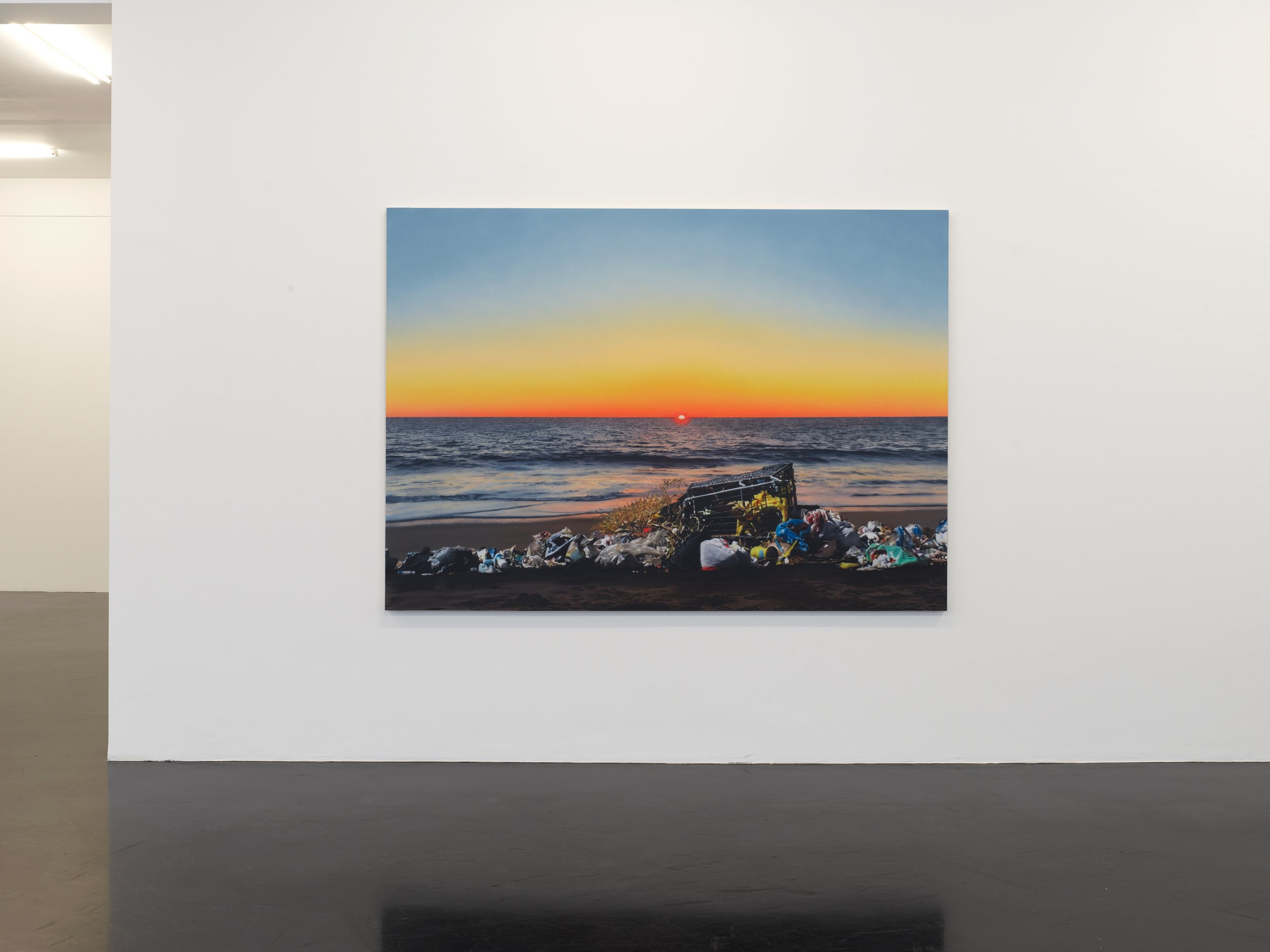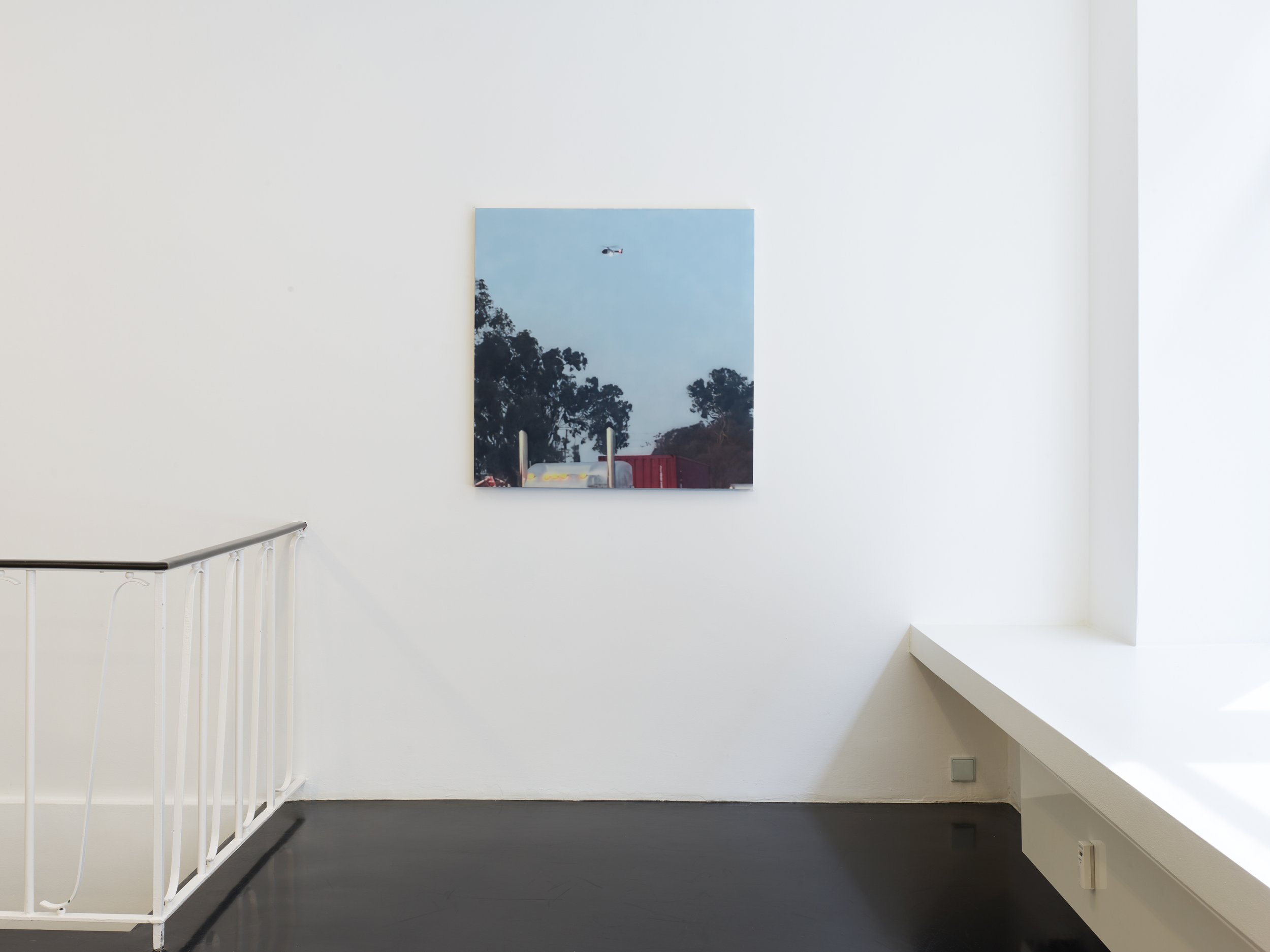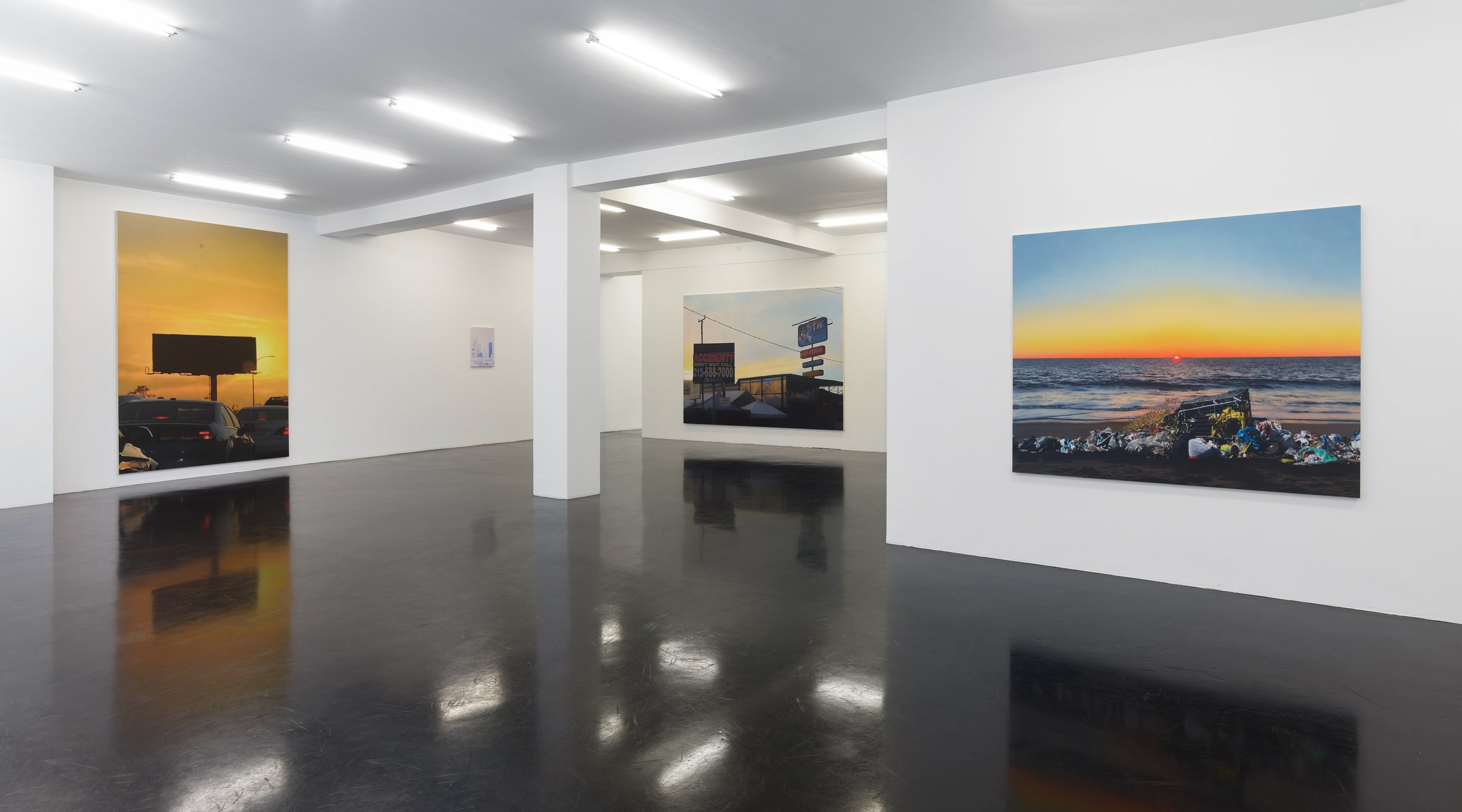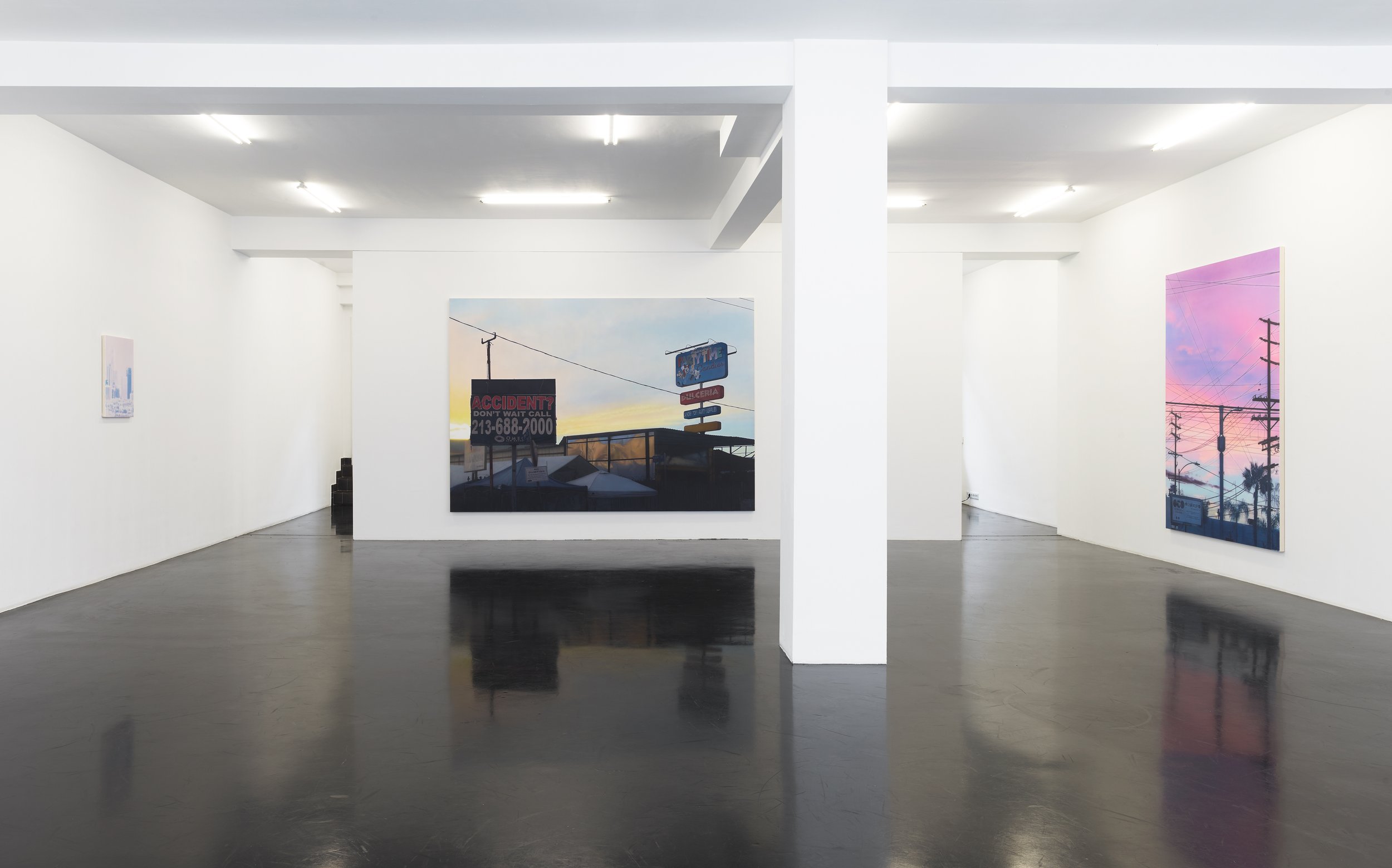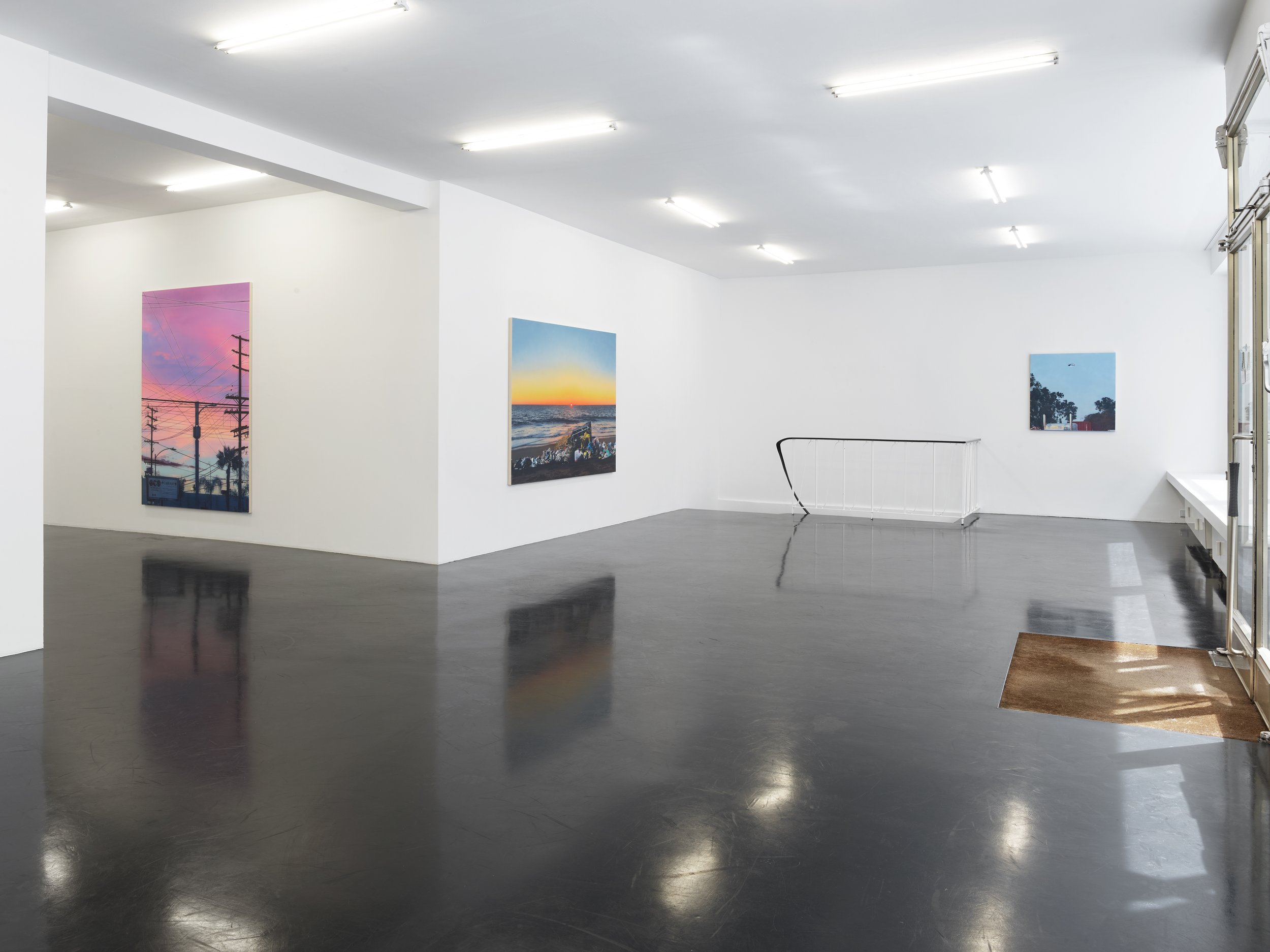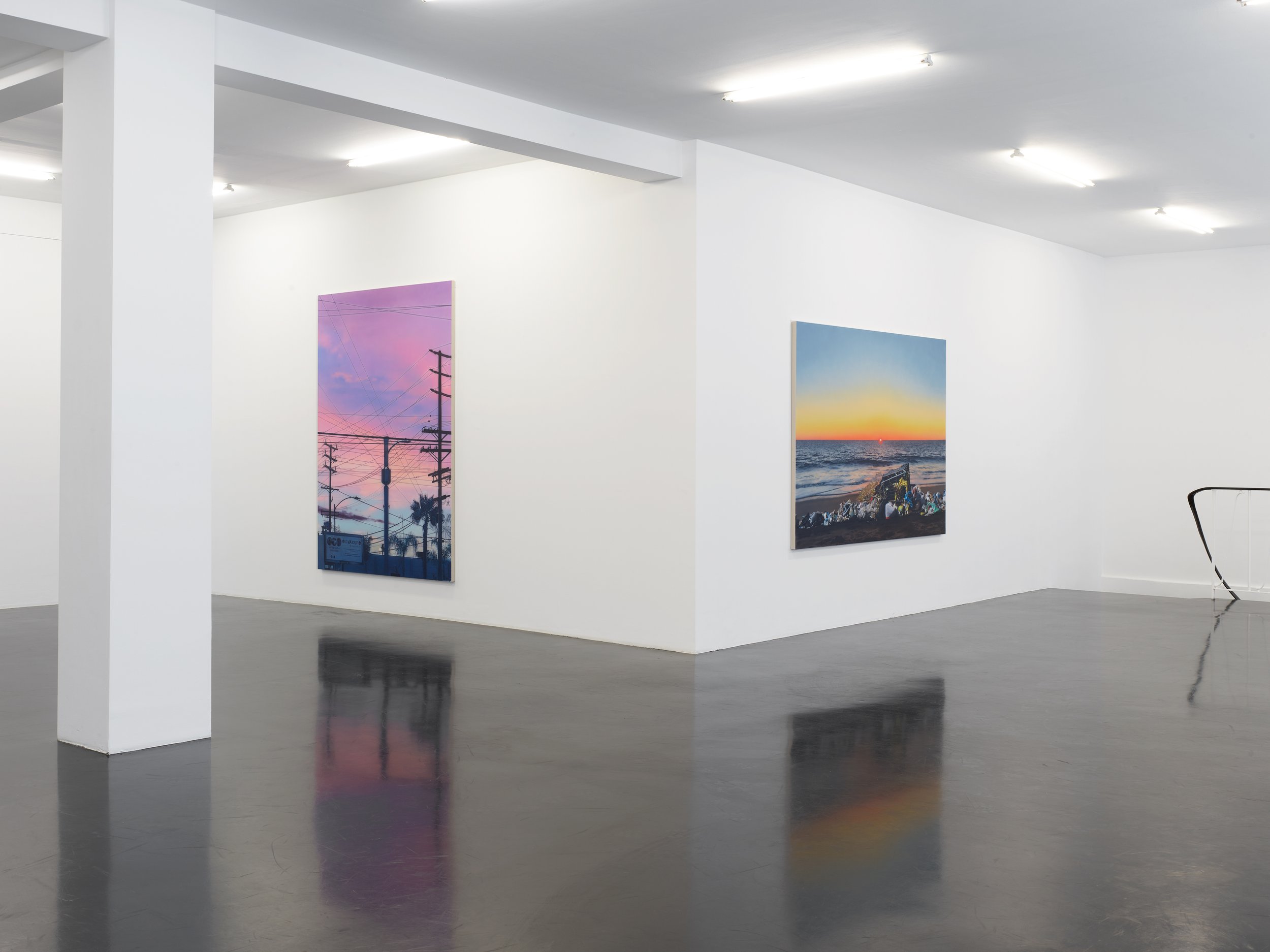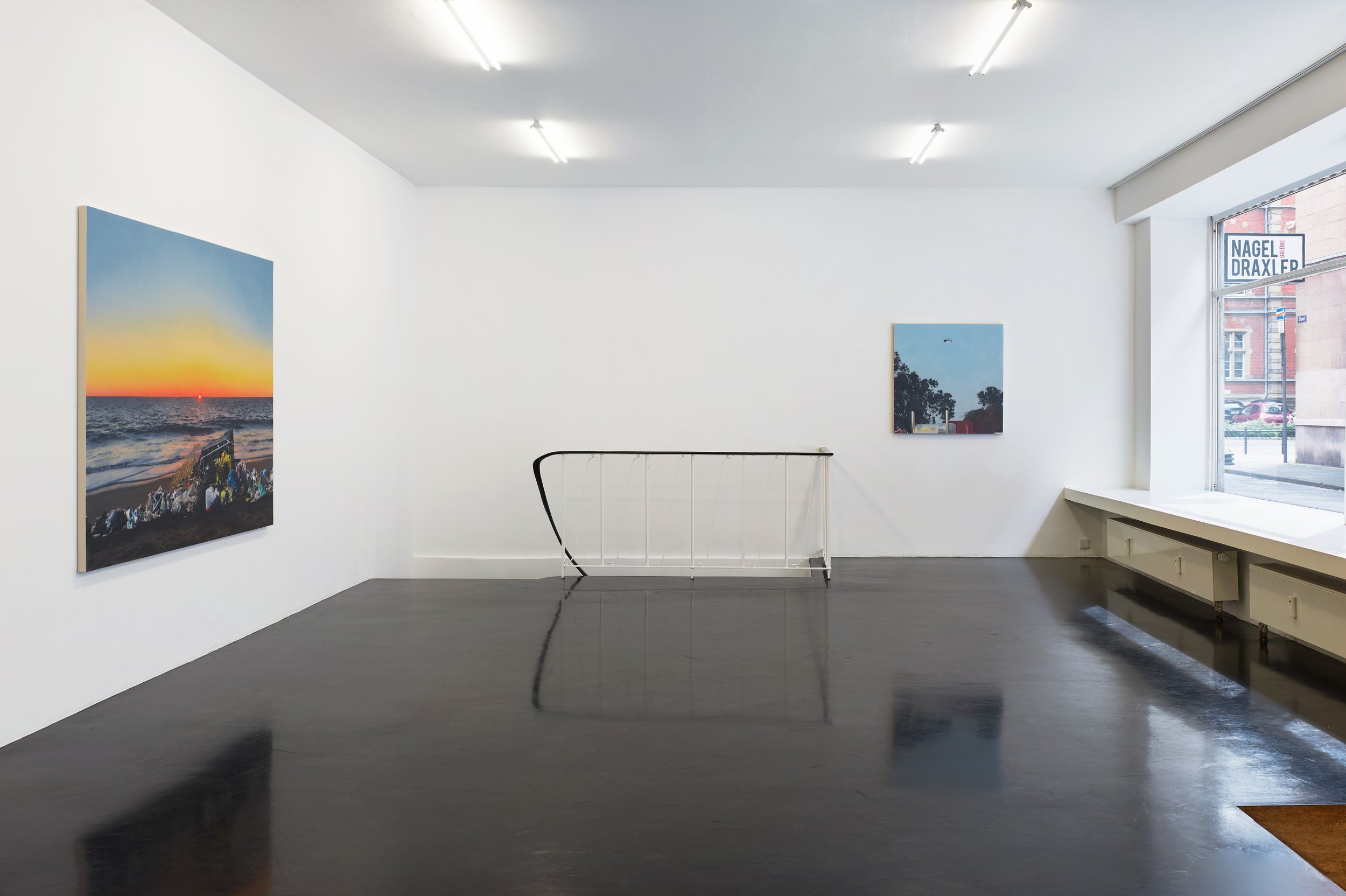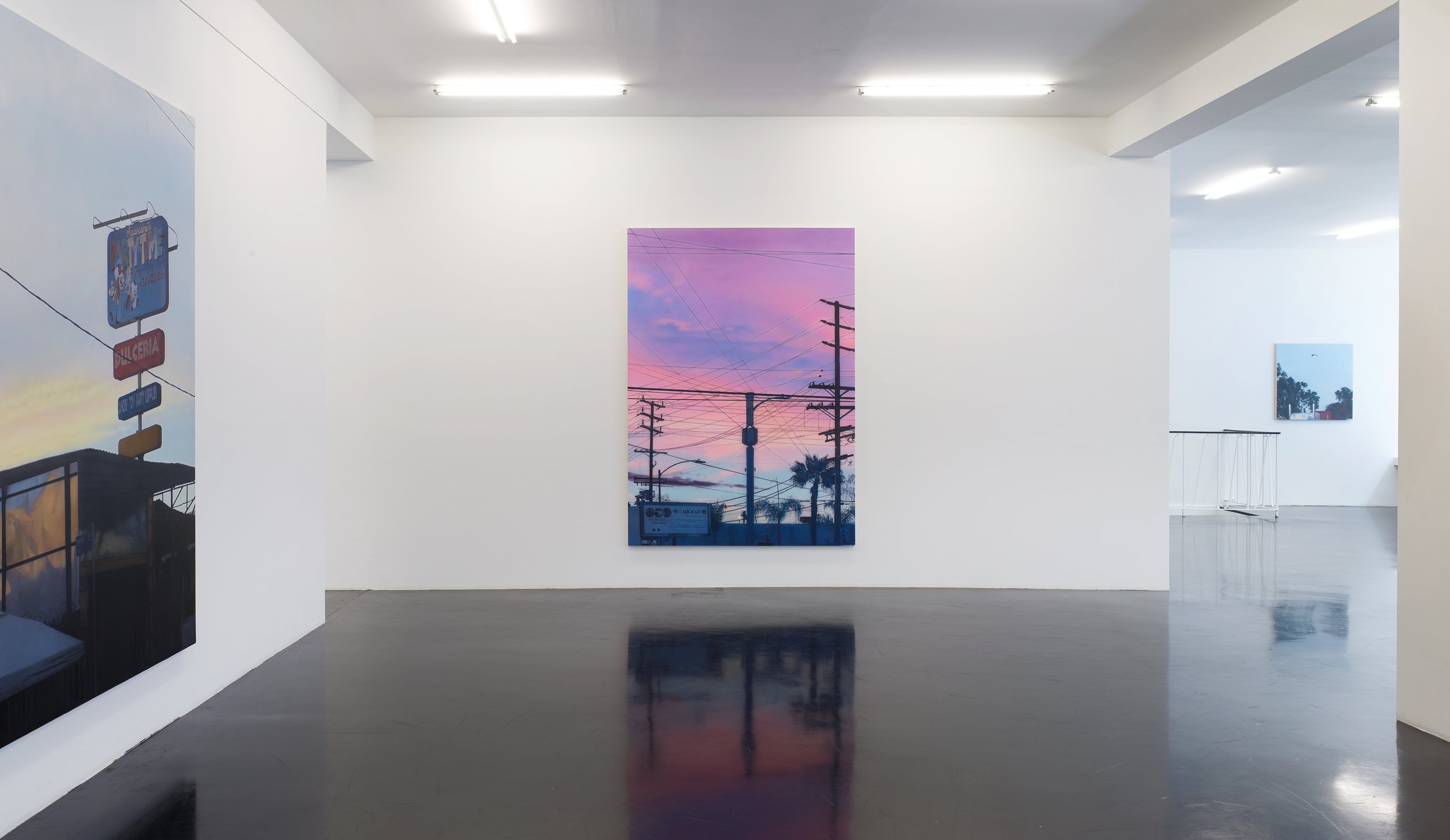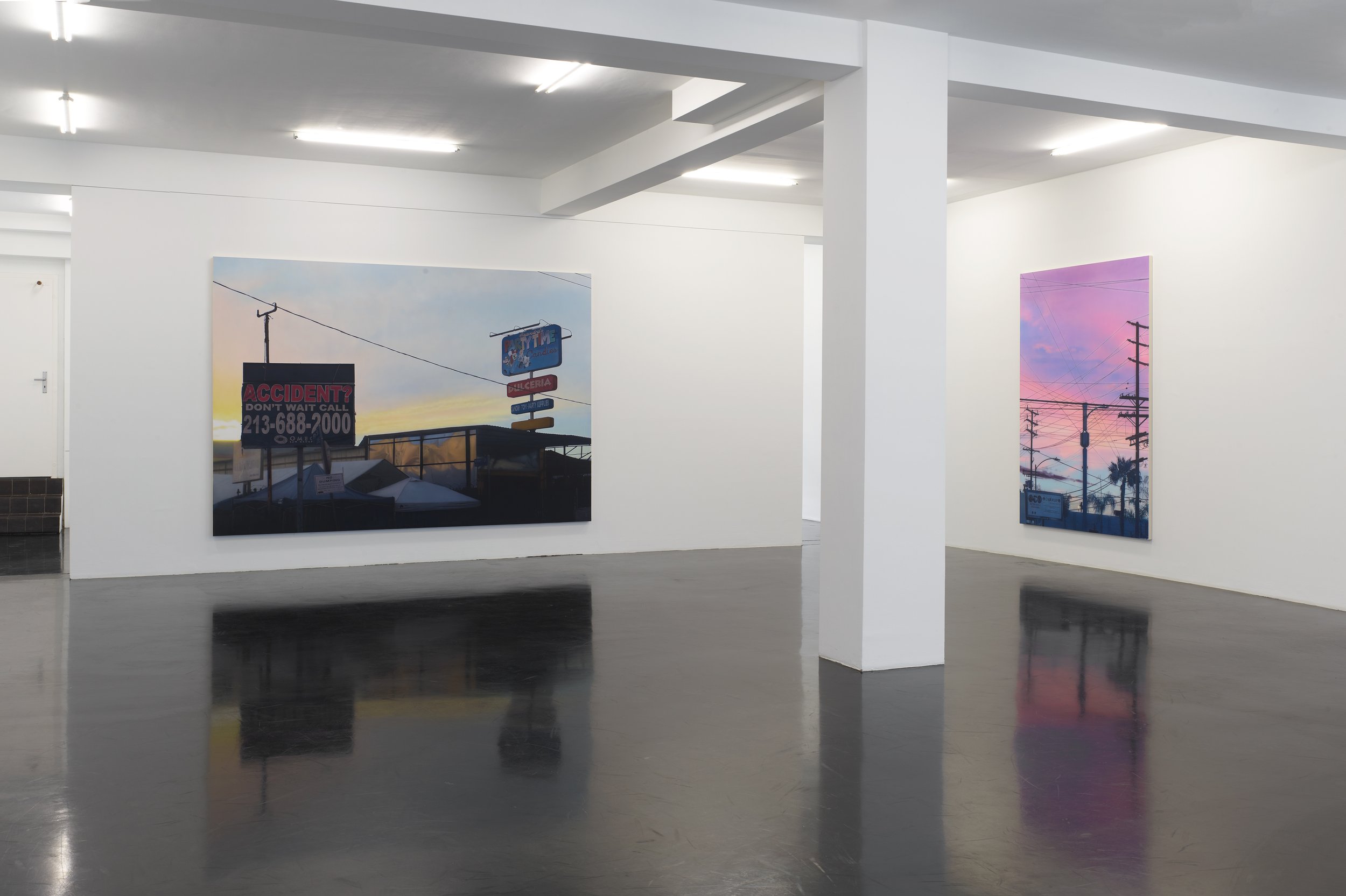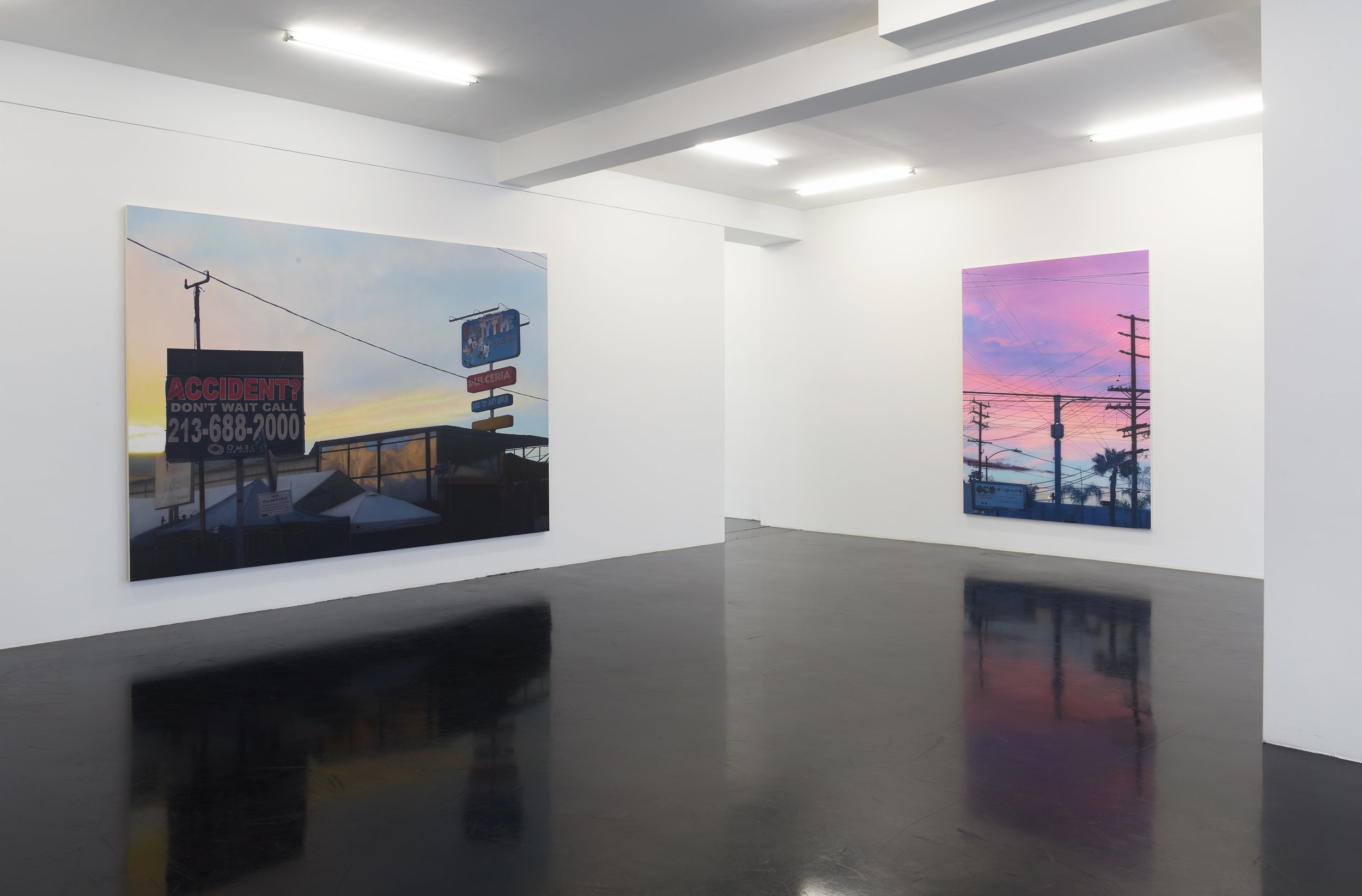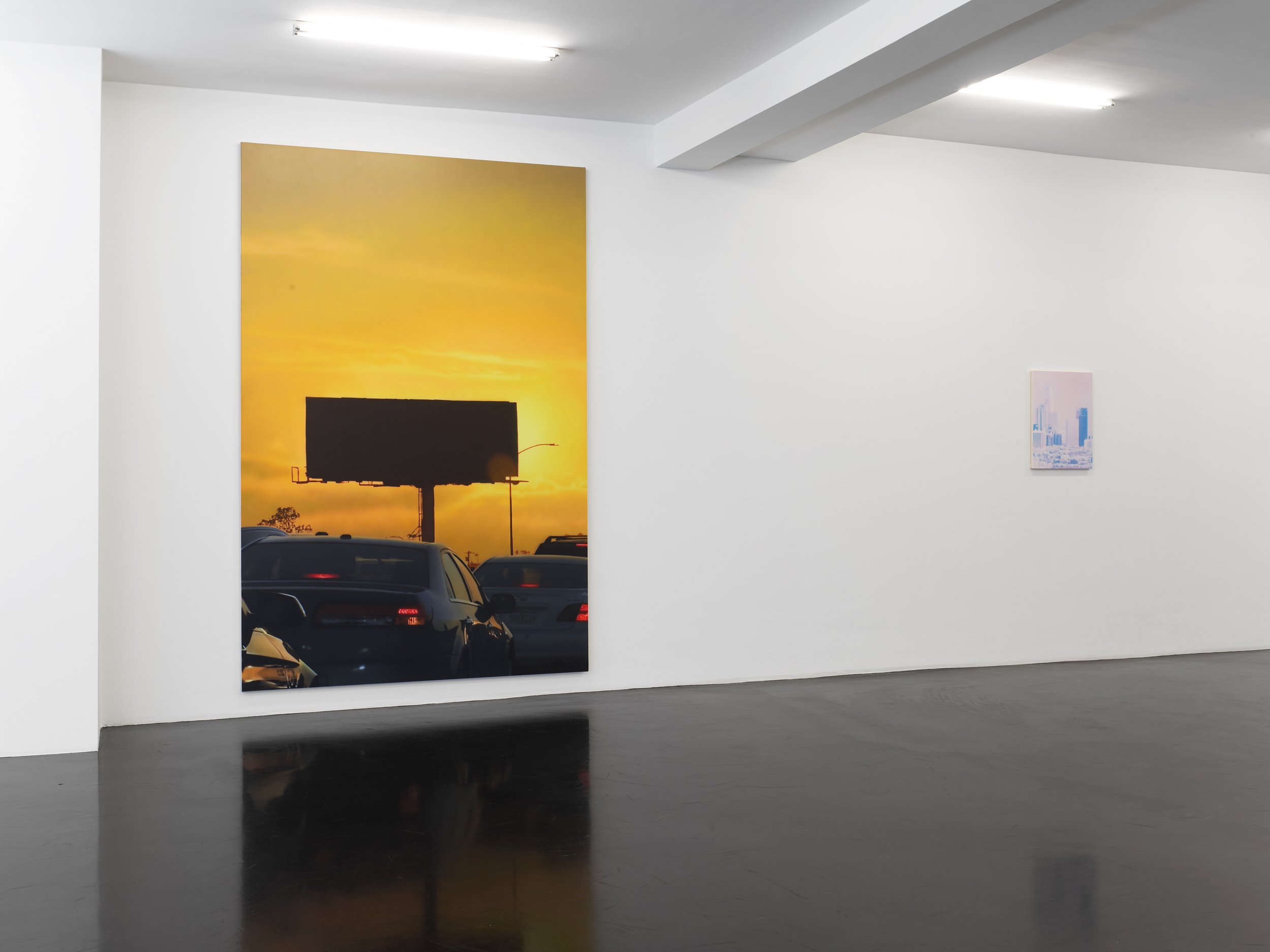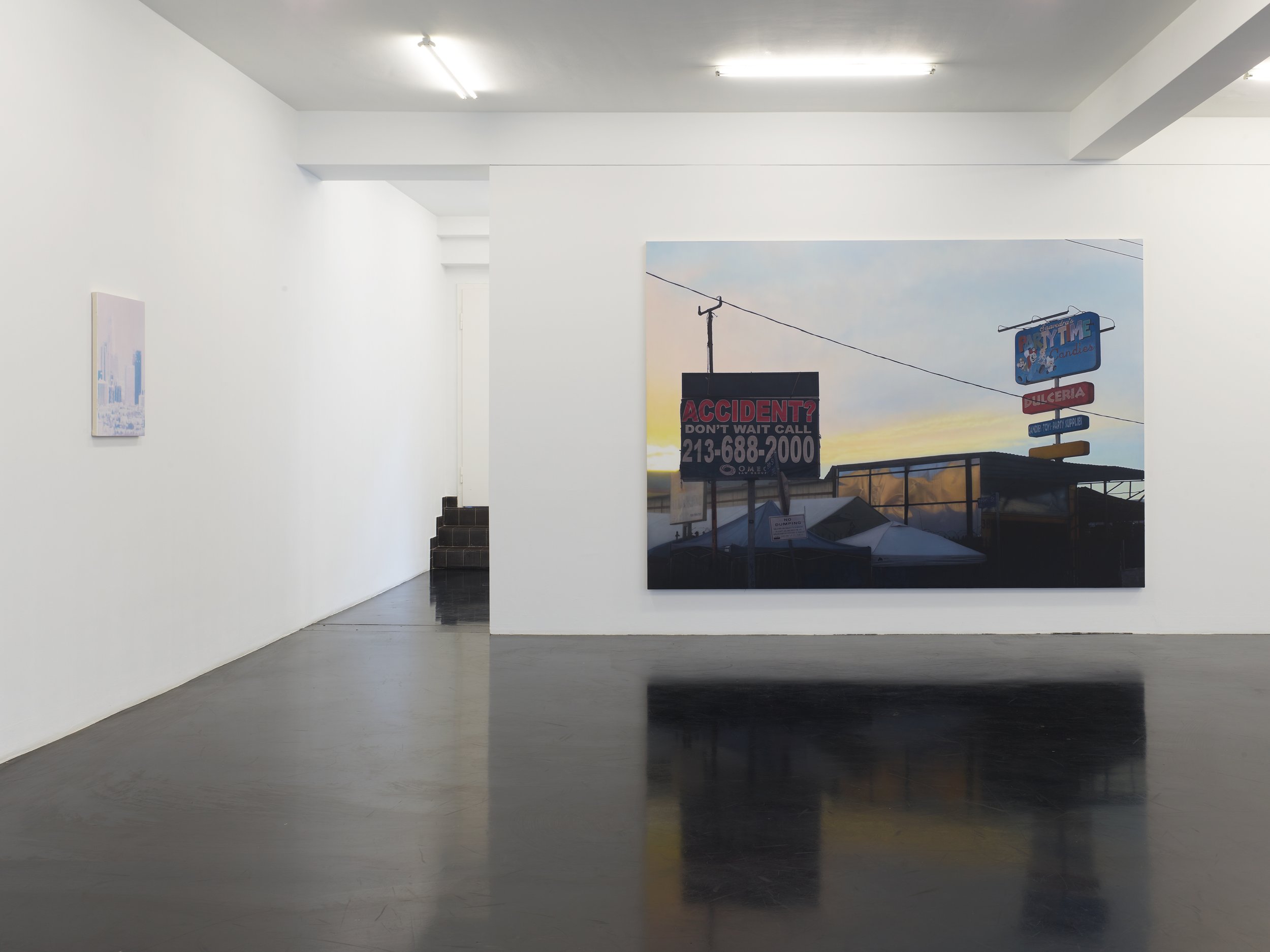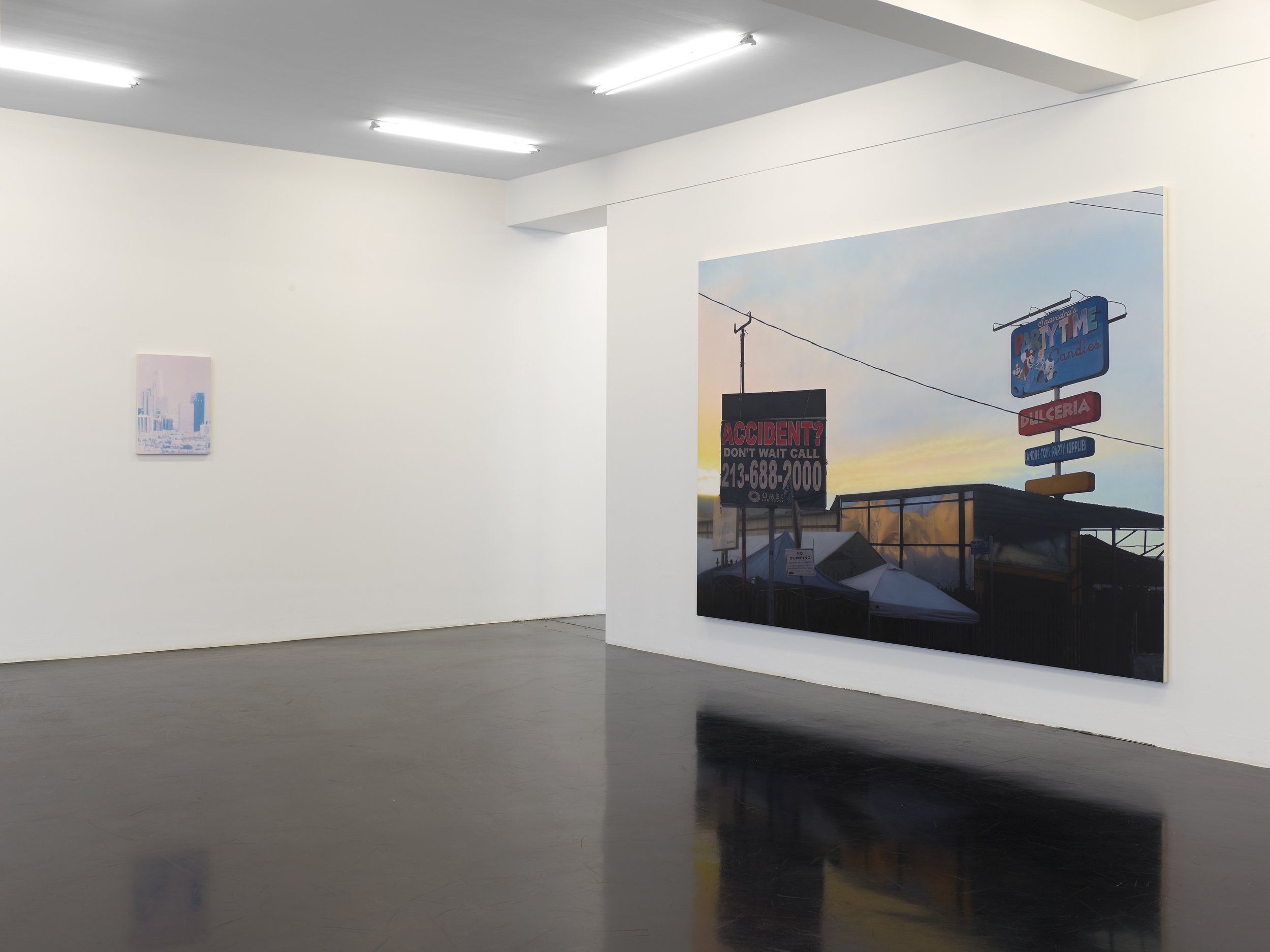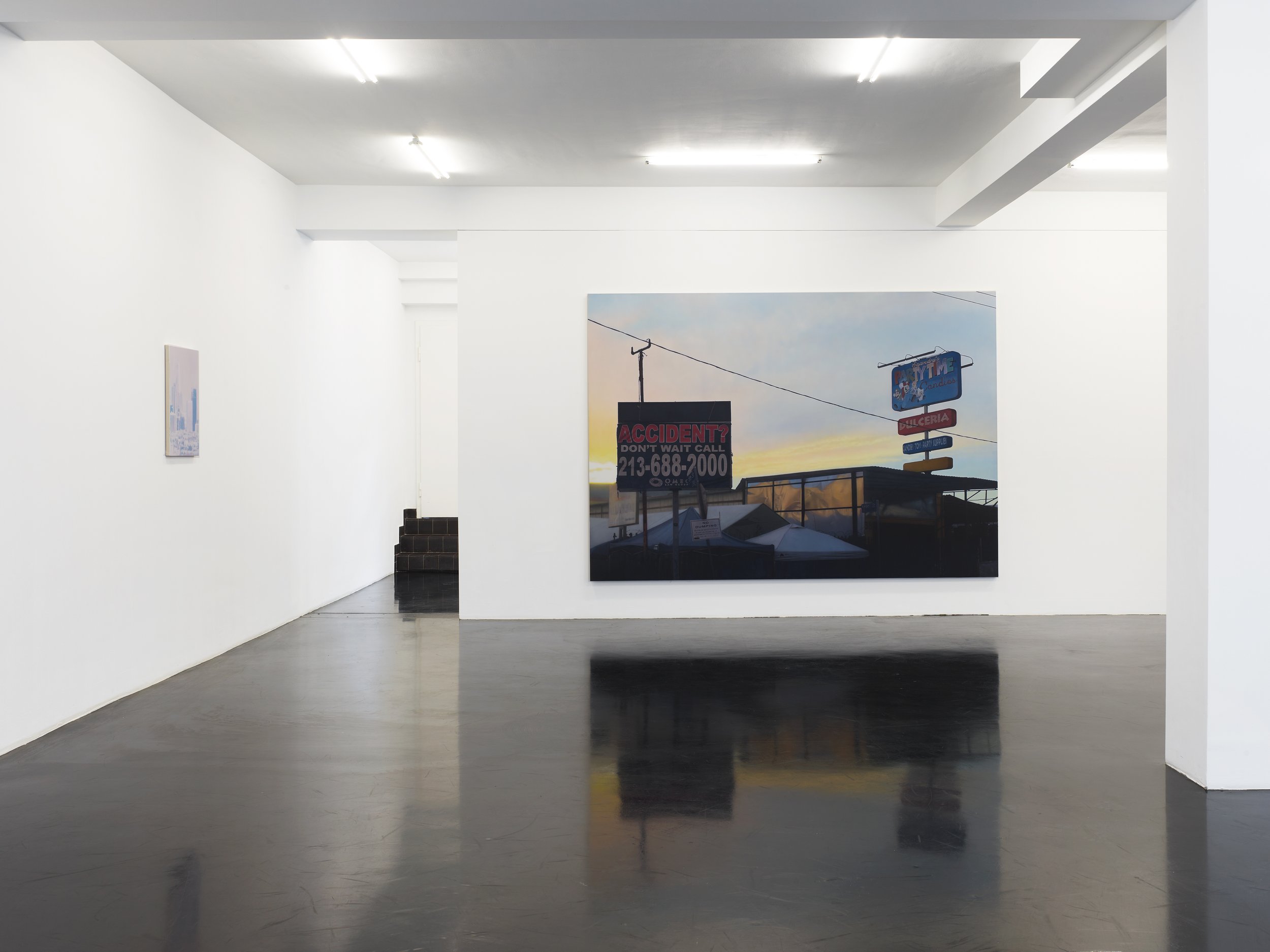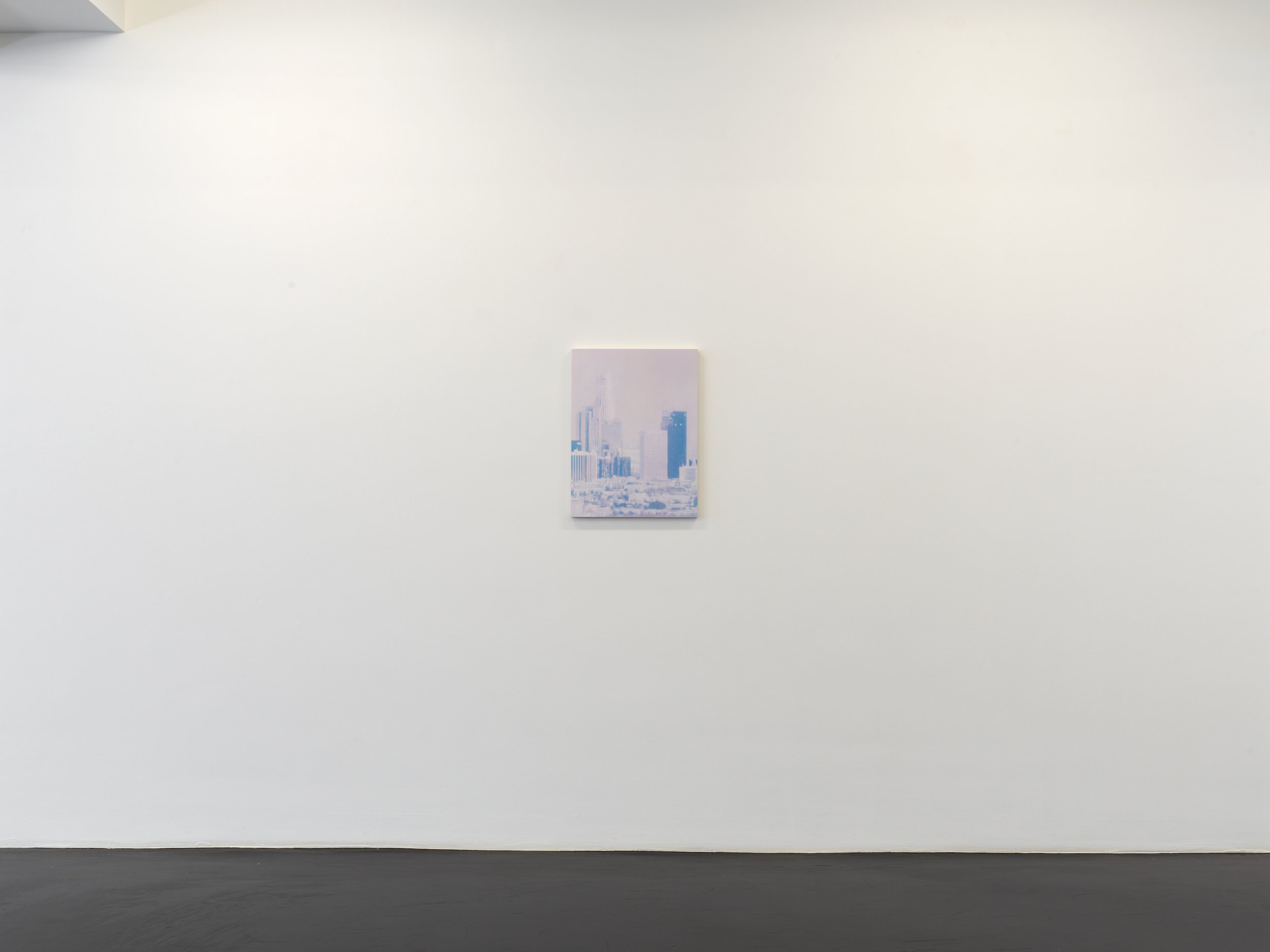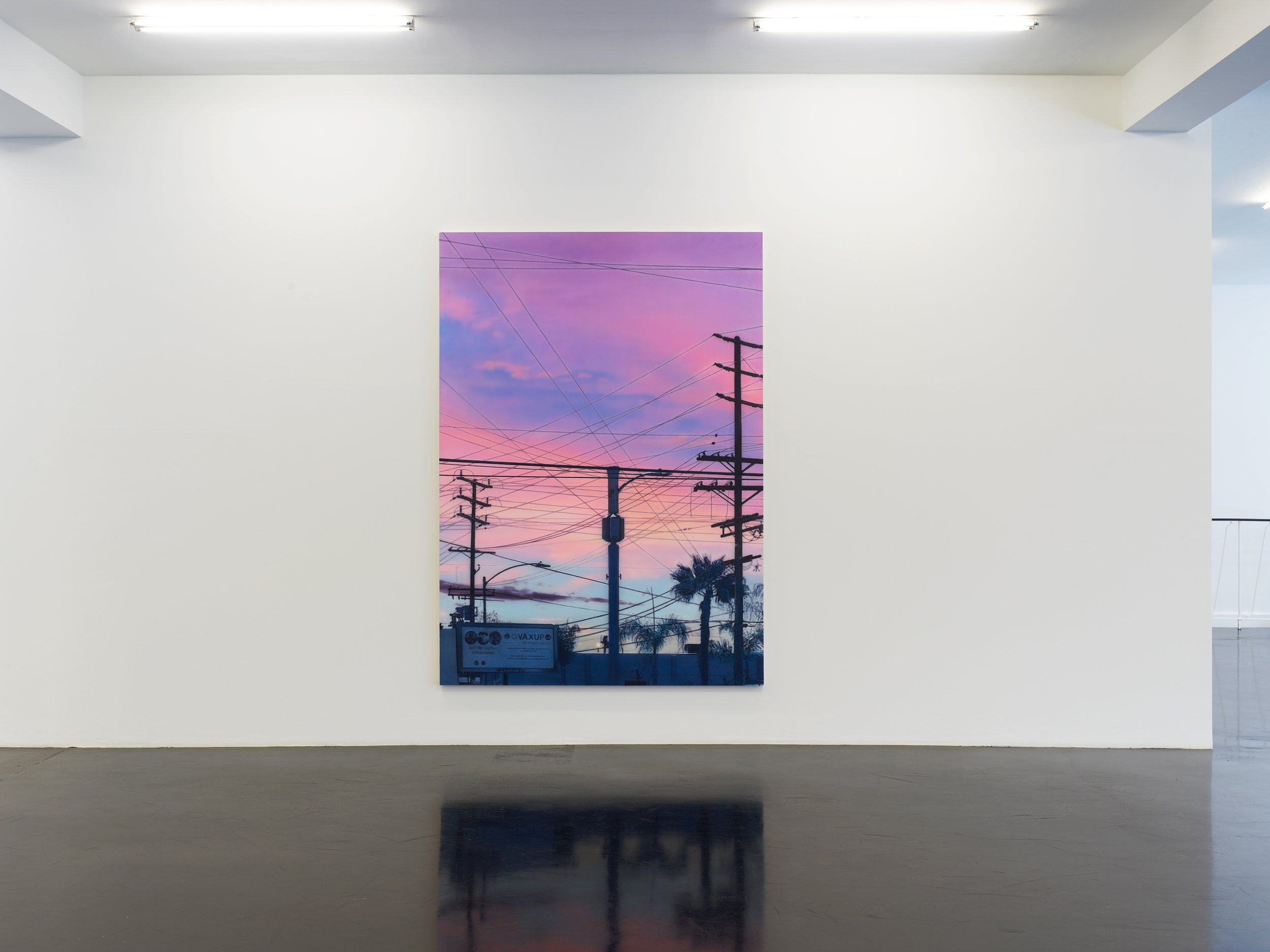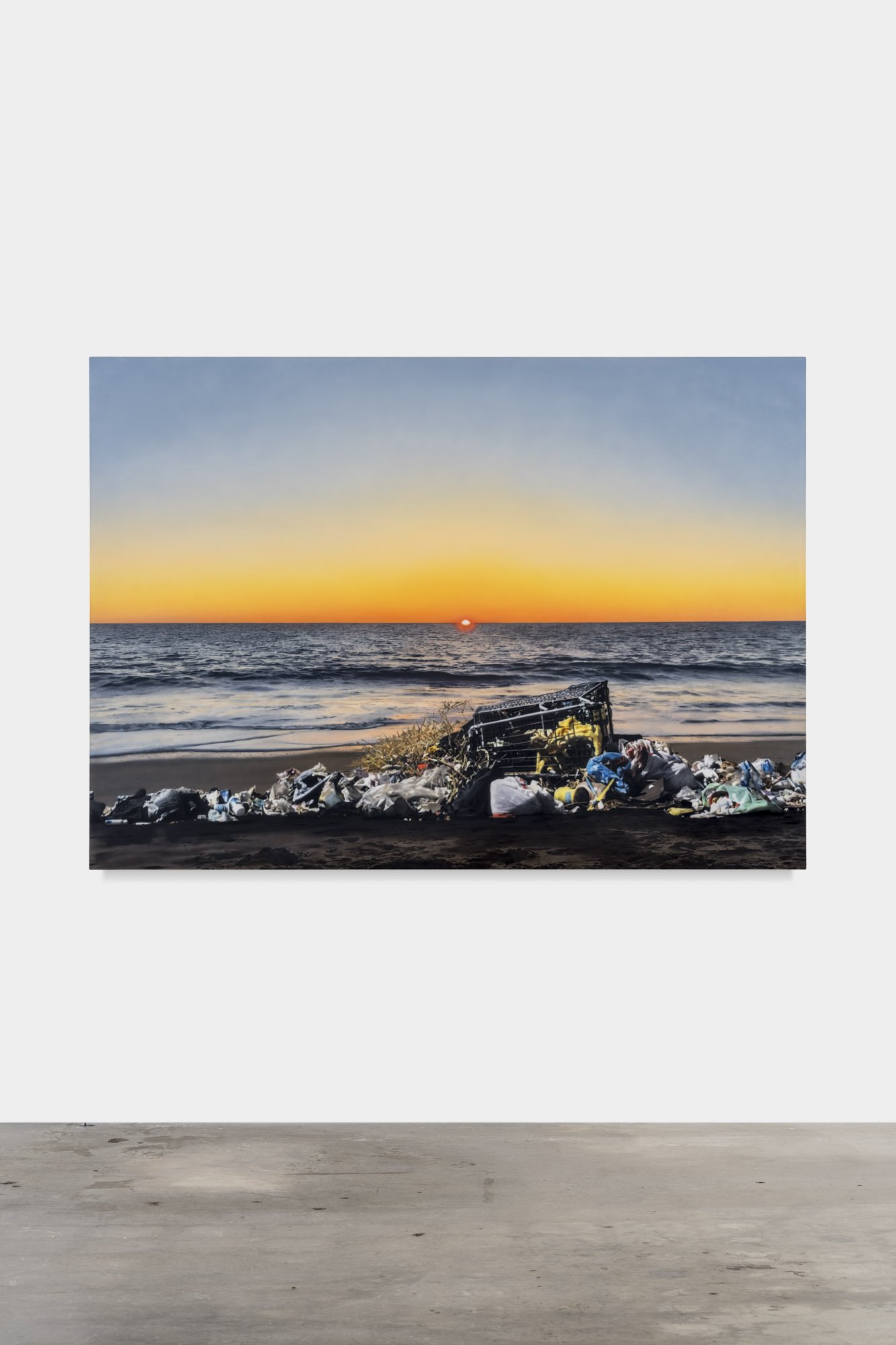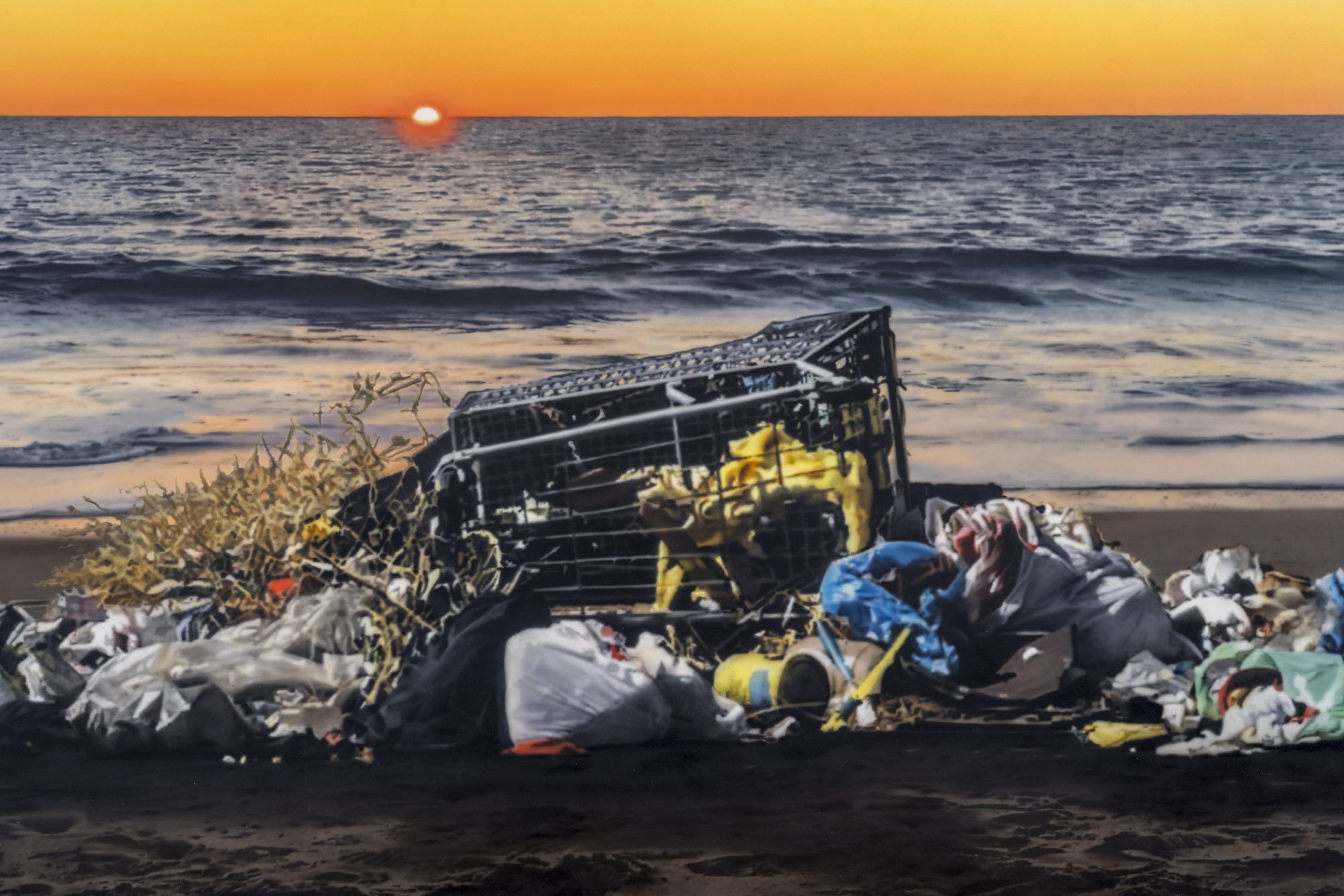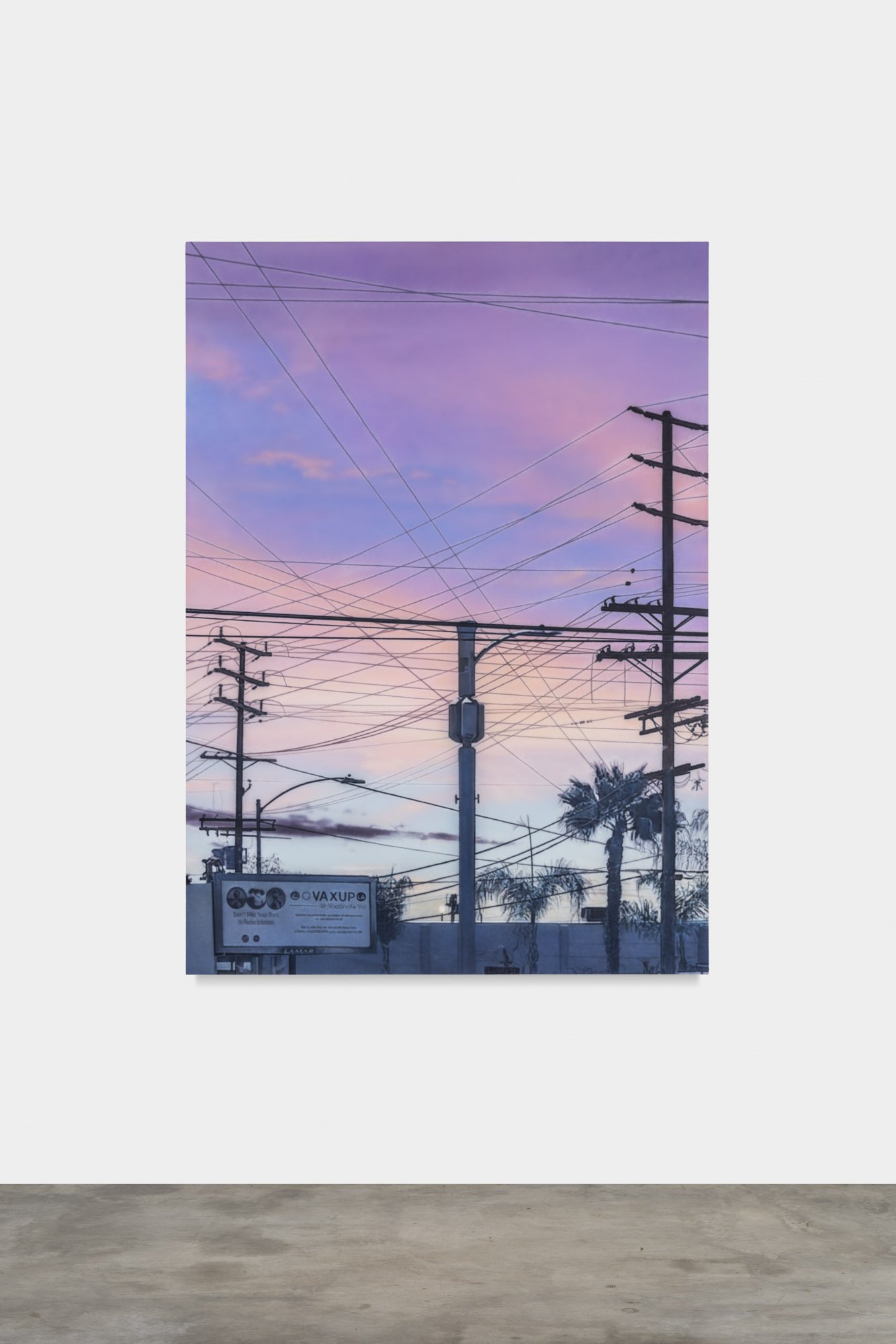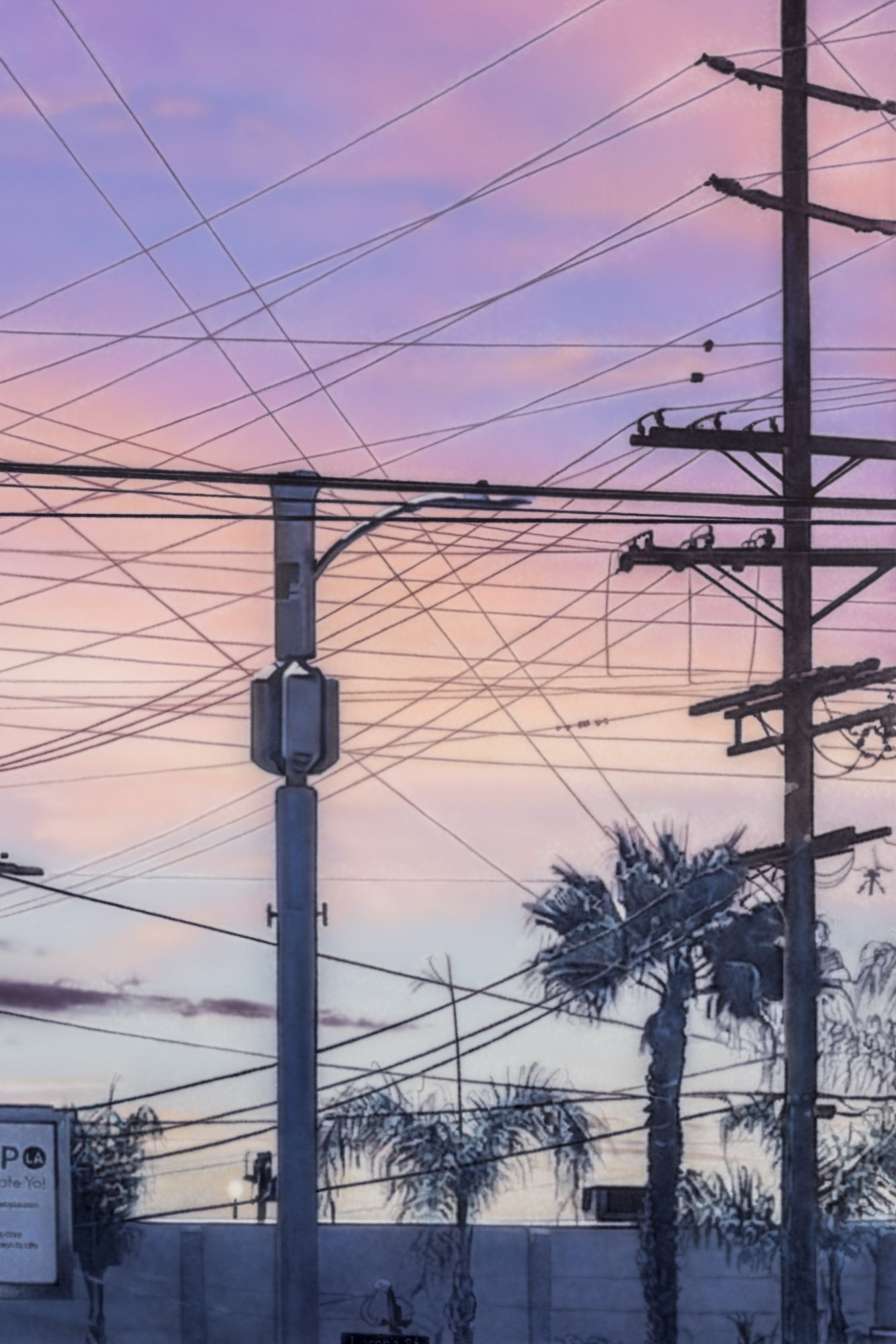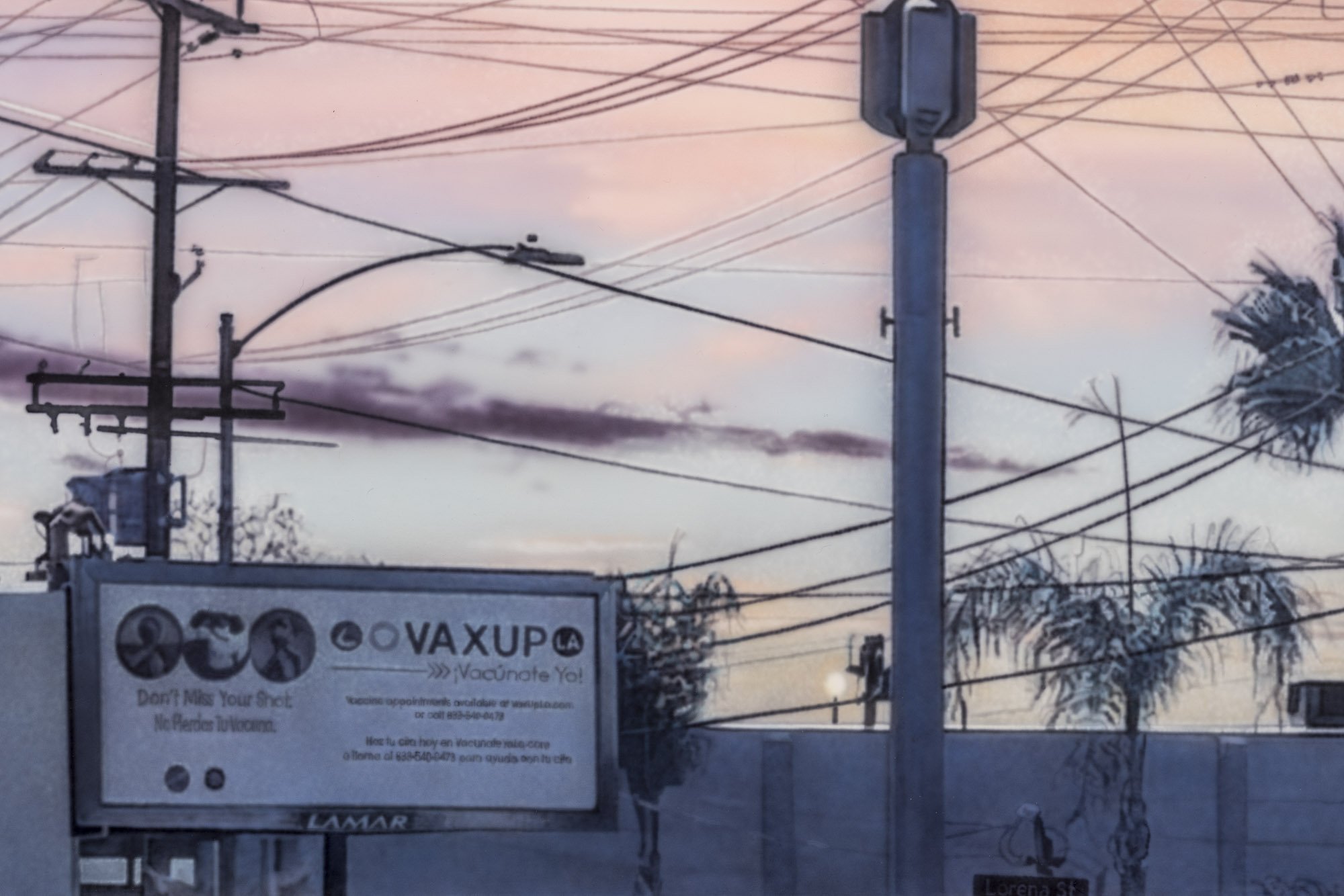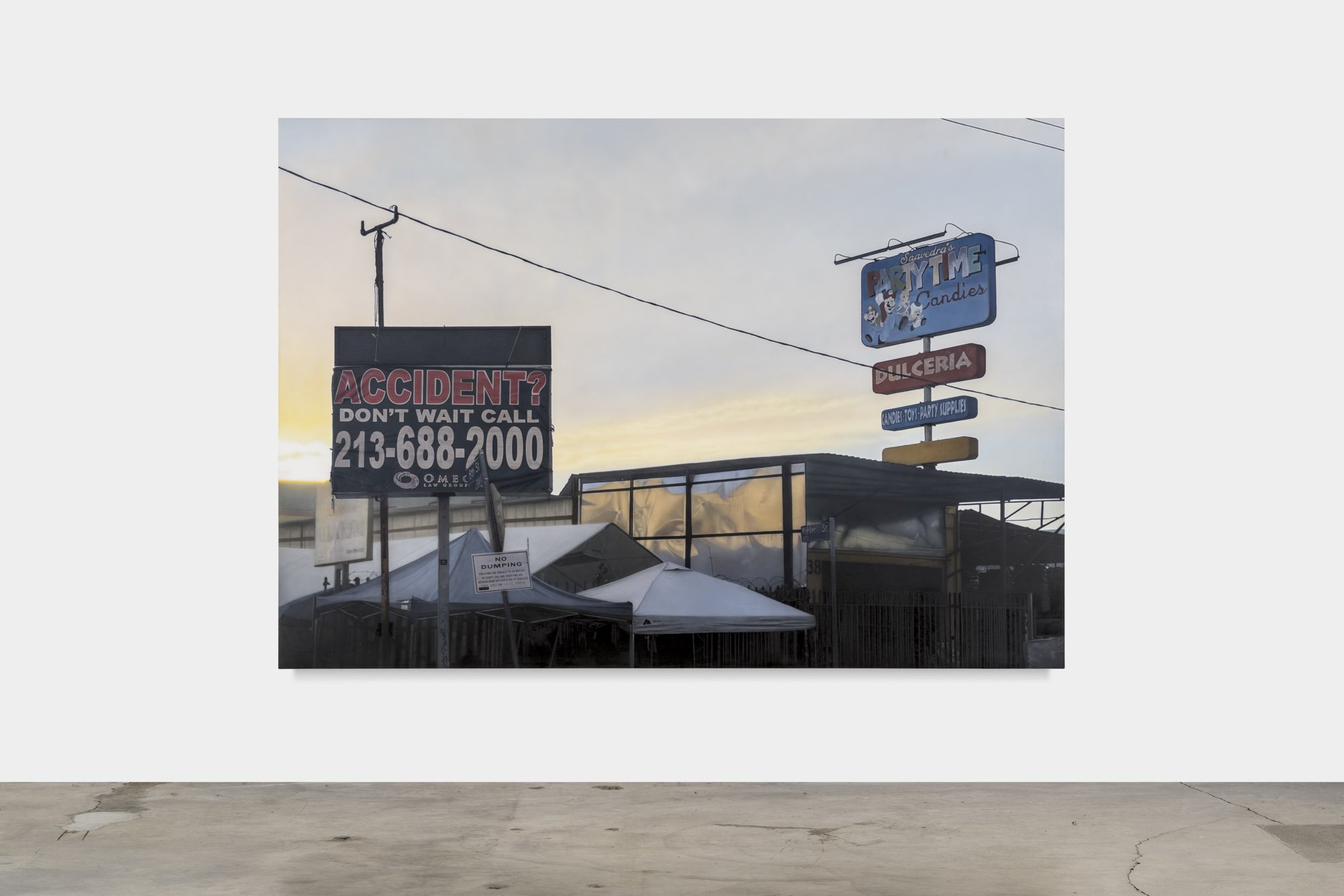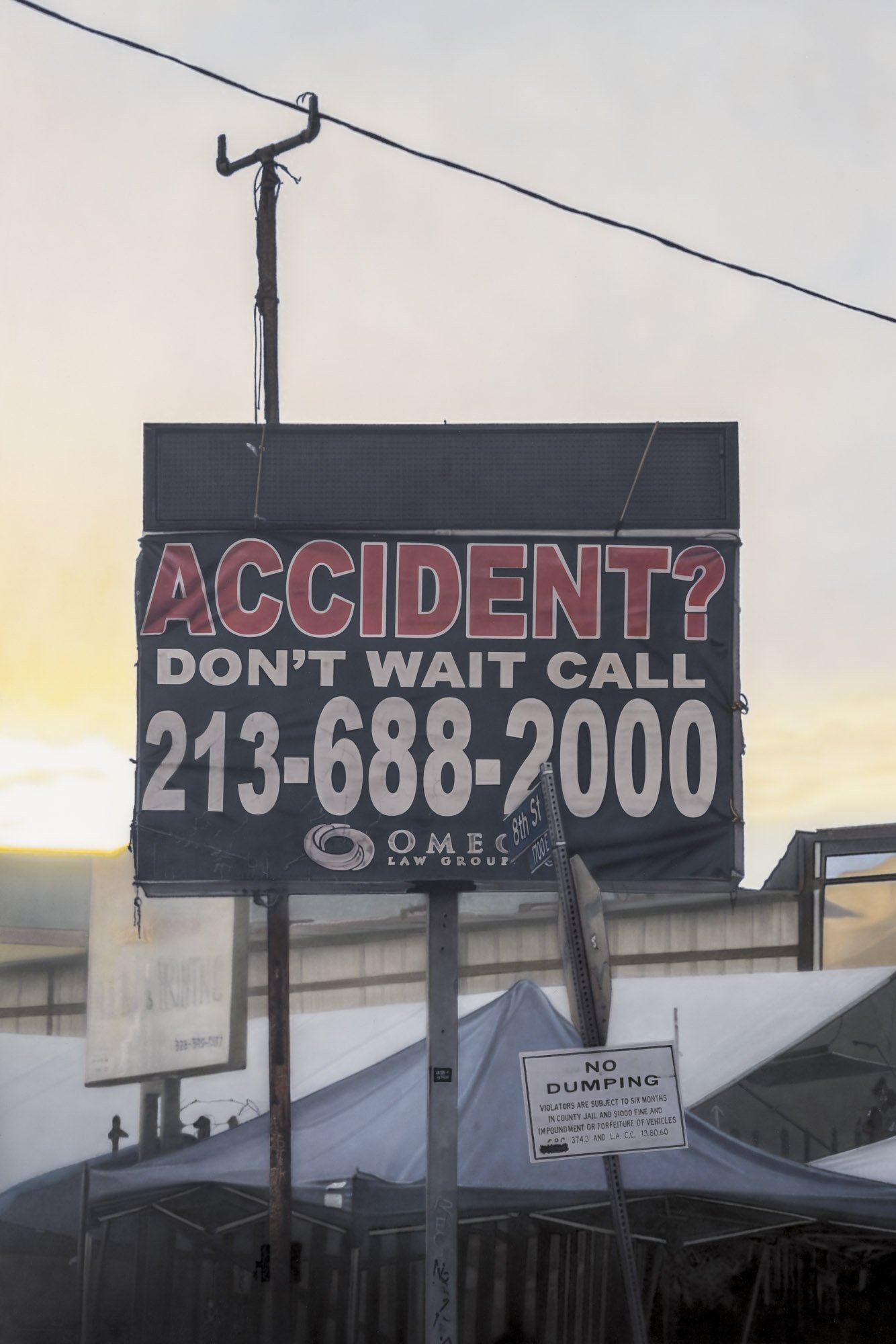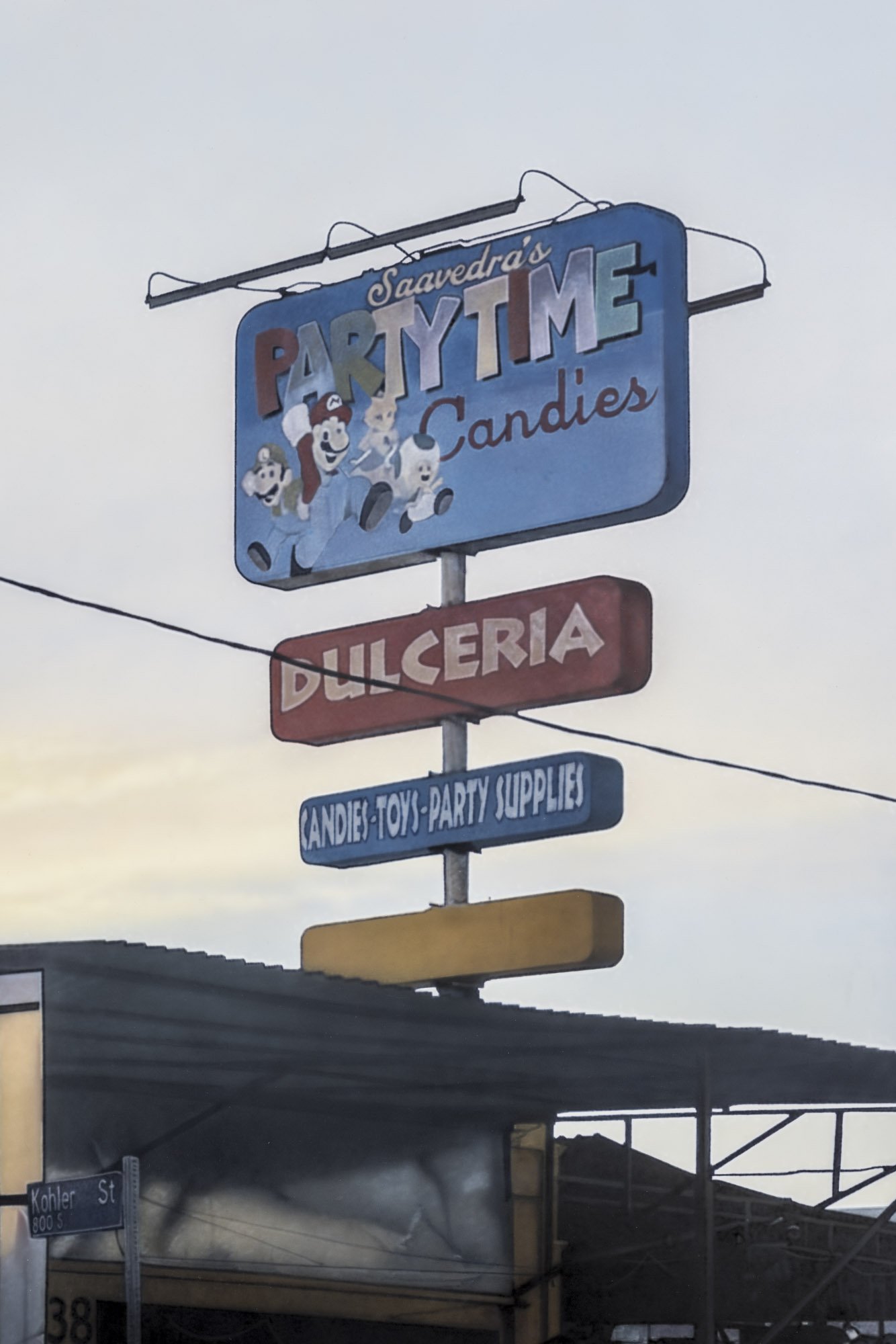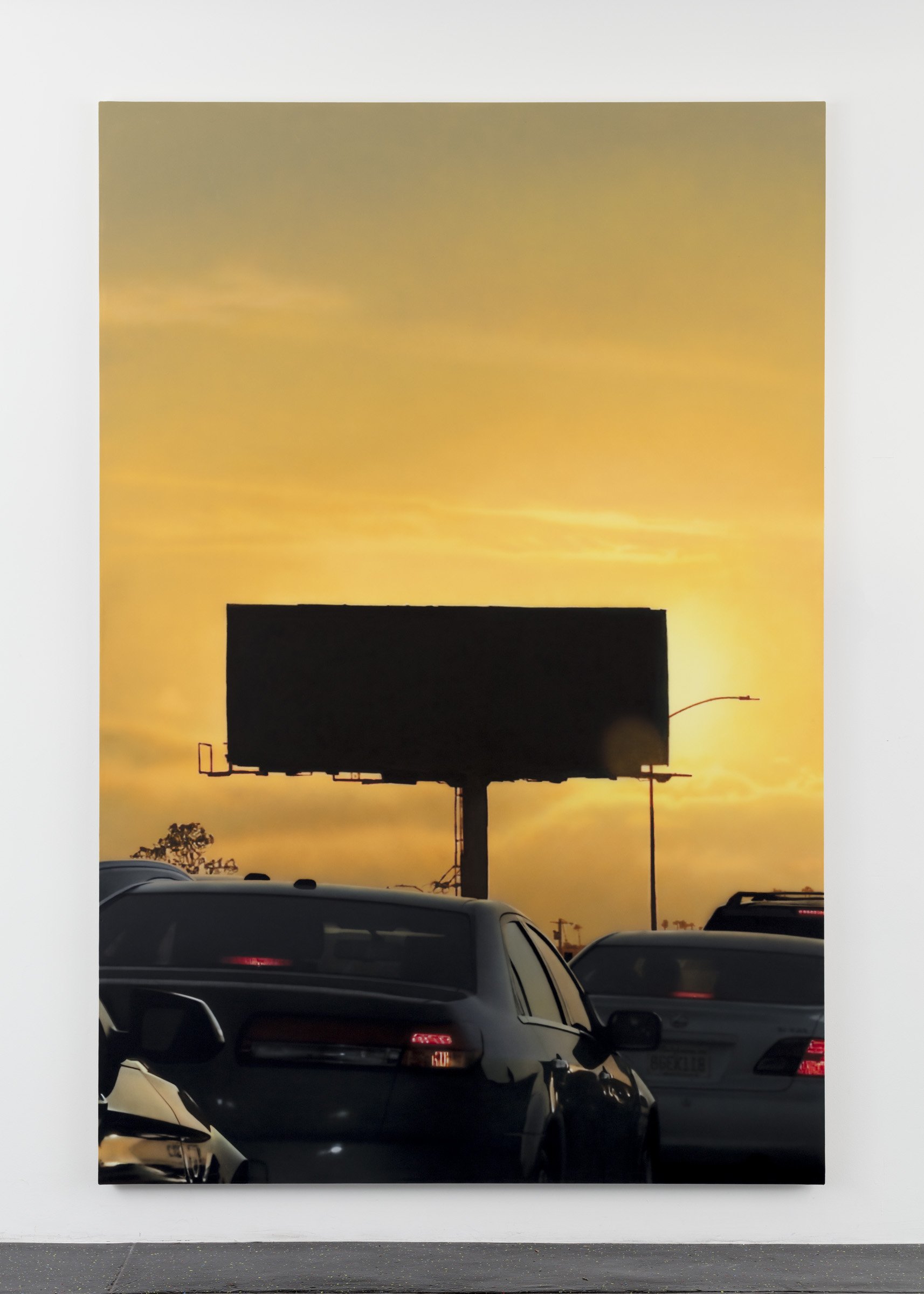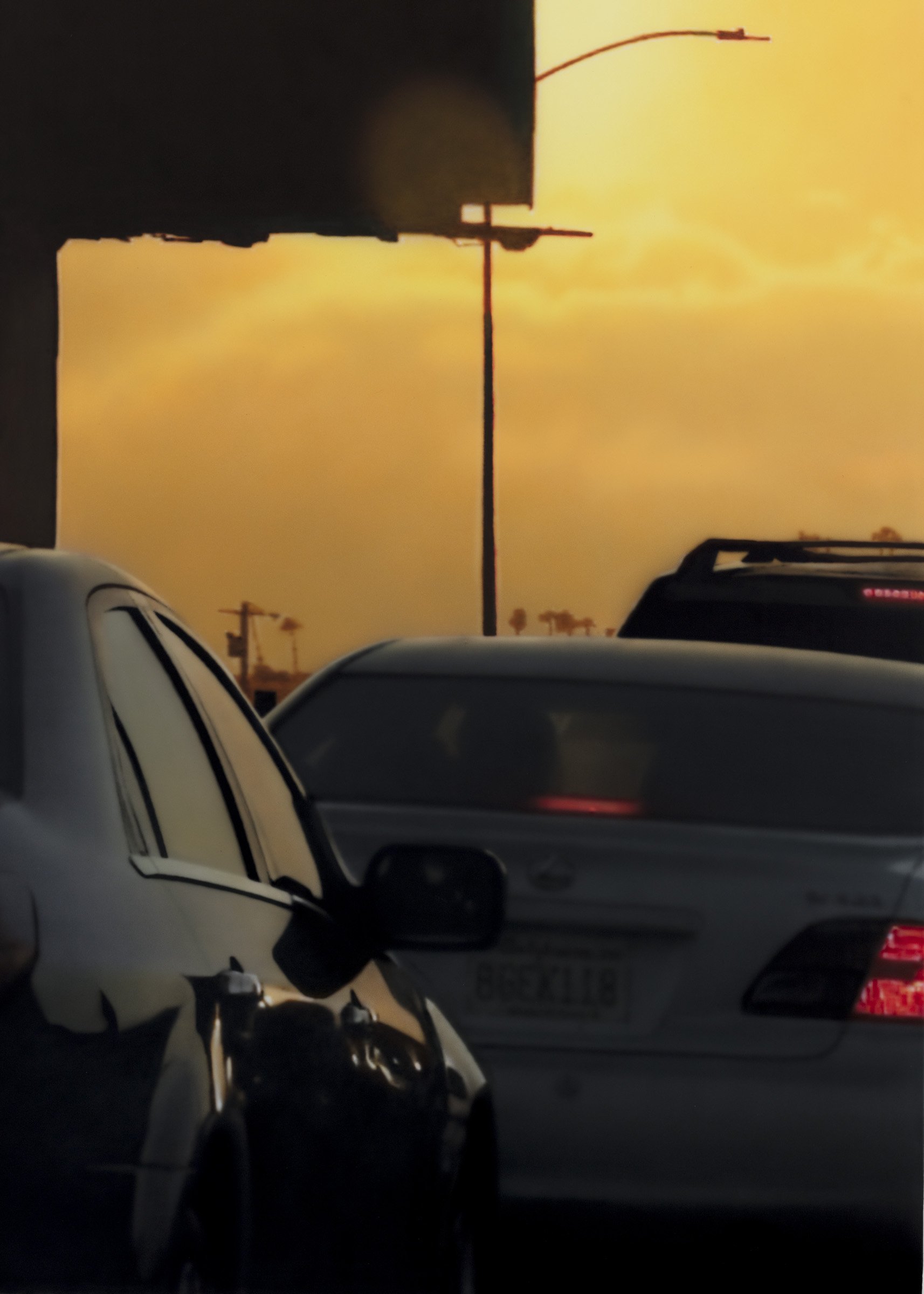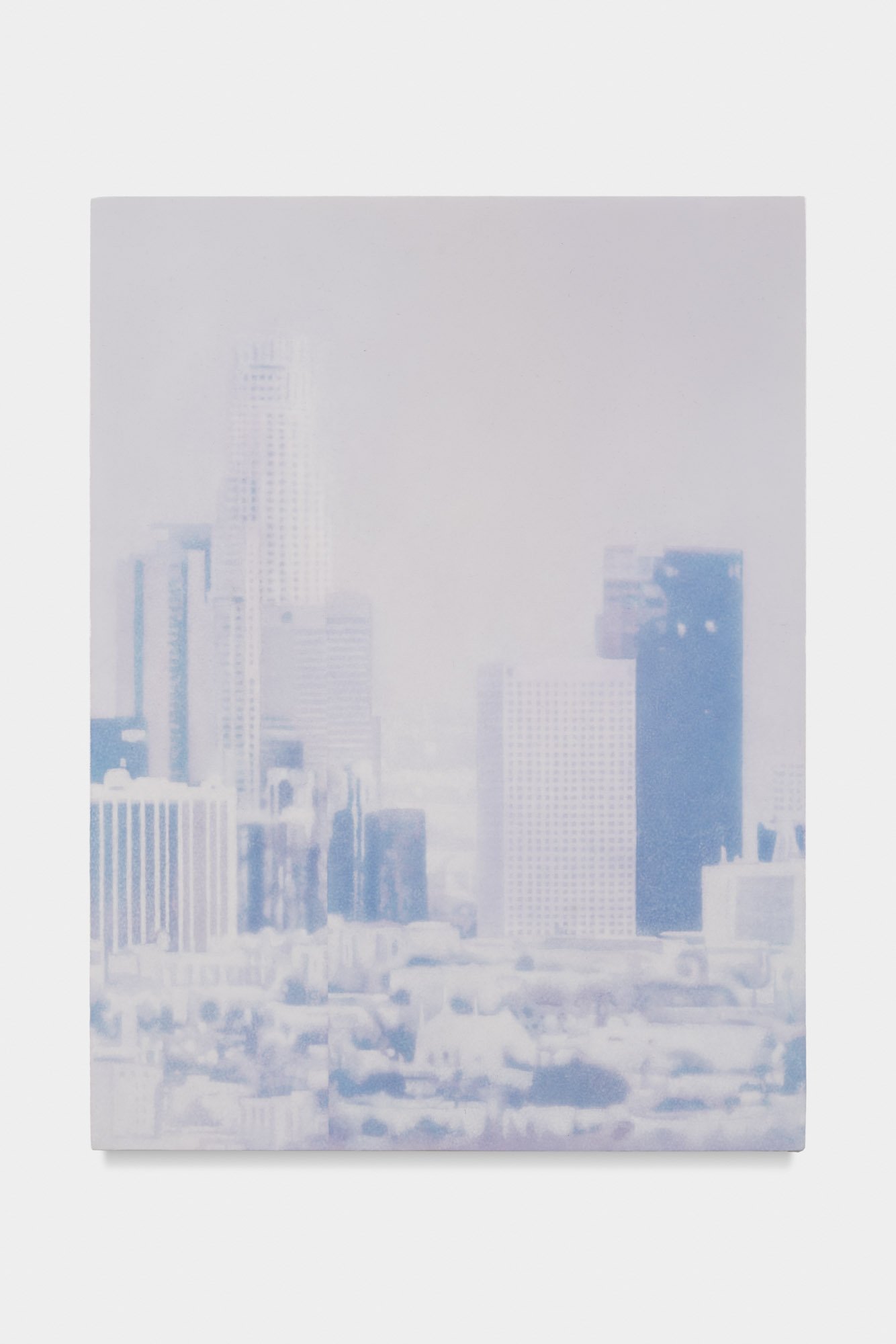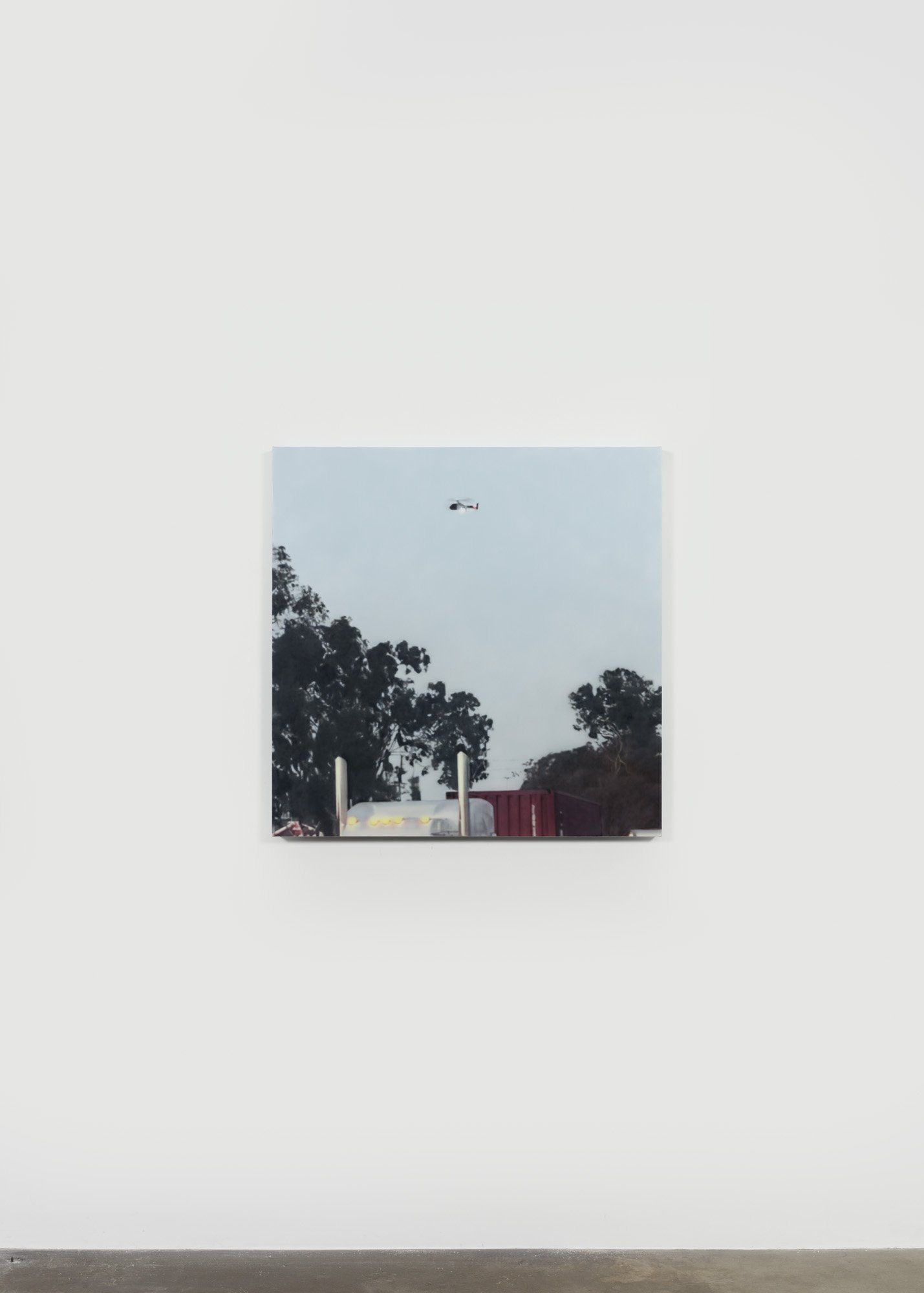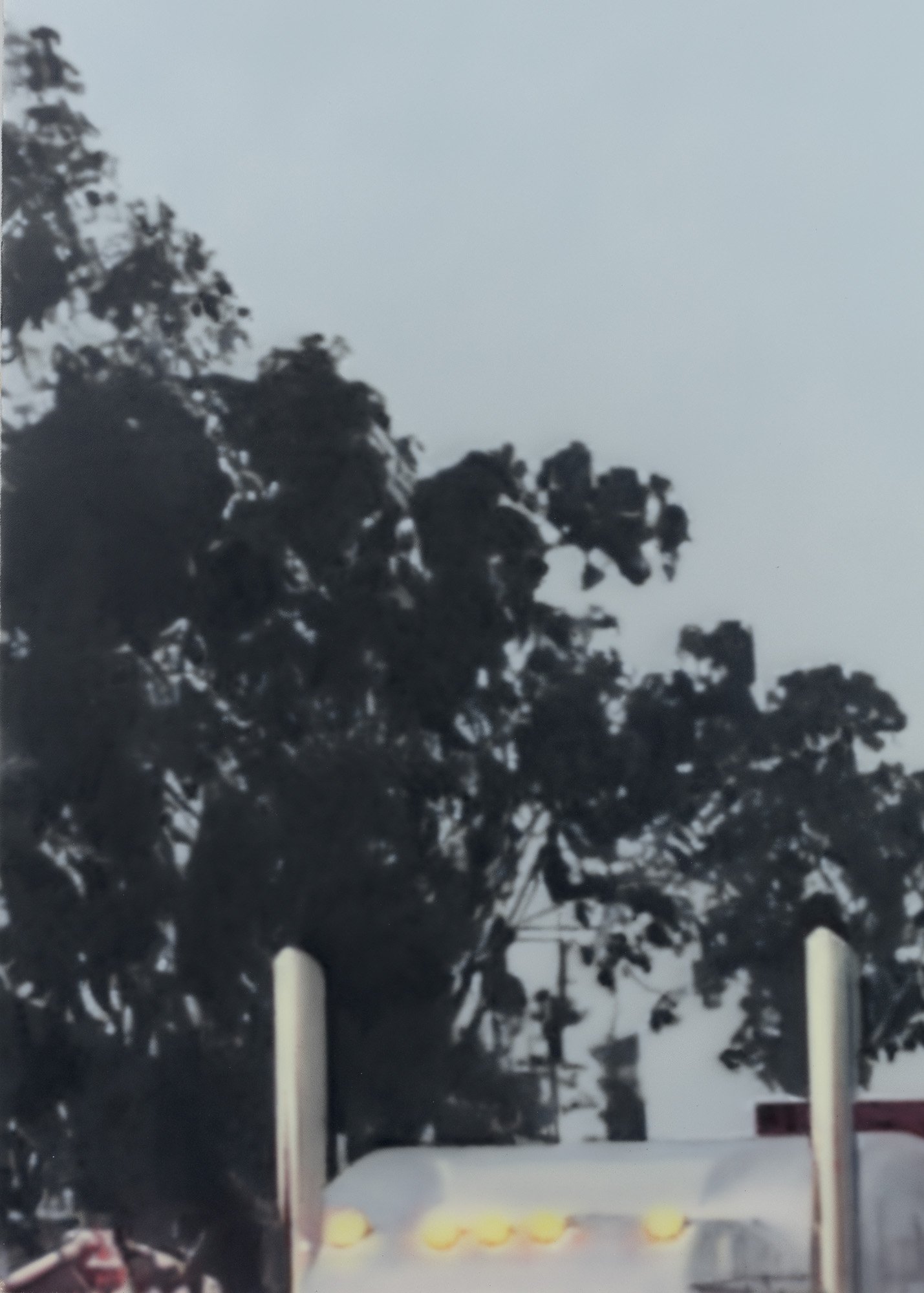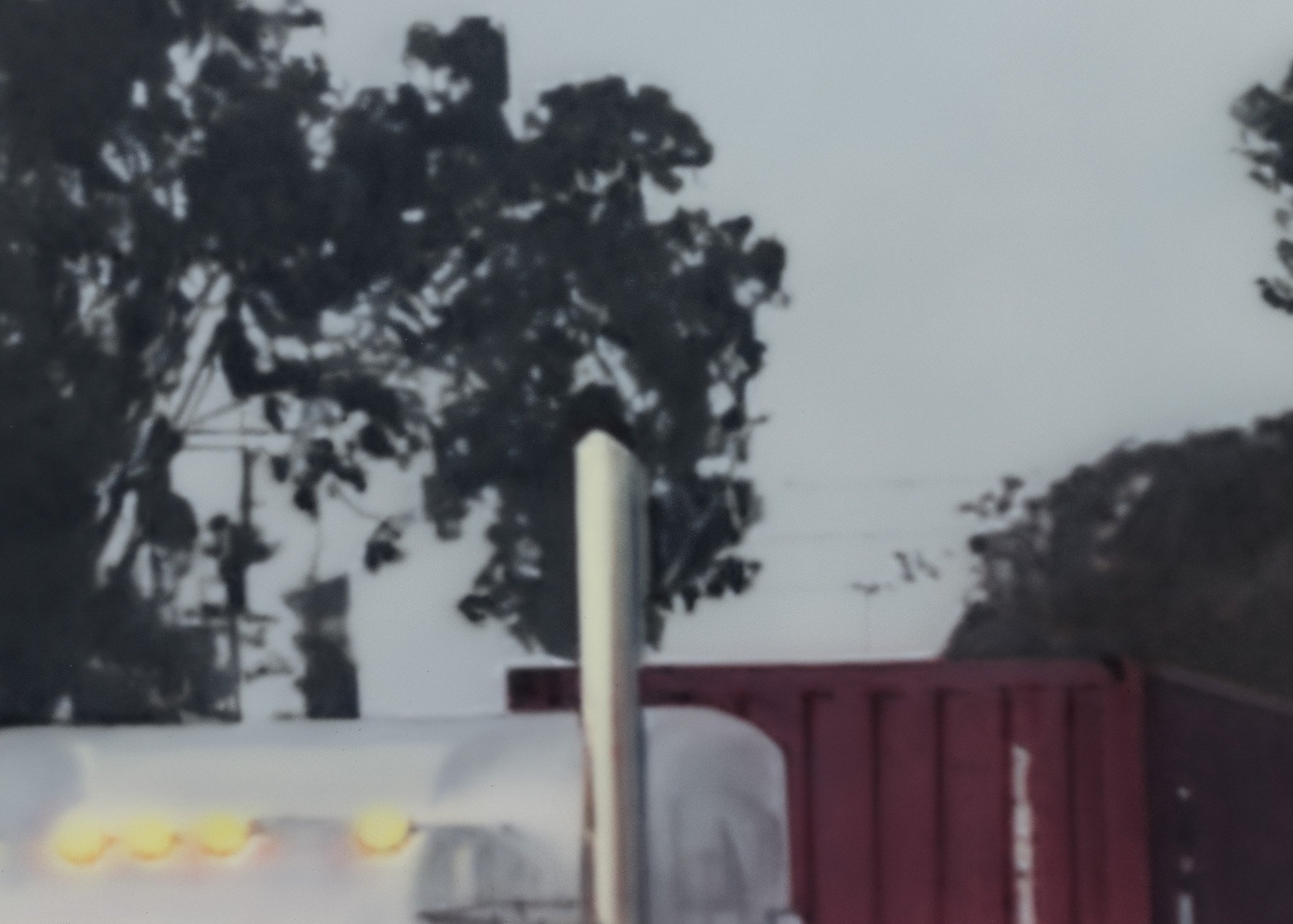Landscapes at Galerie Nagel Draxler, Cologne DE
May 13, 2023 - August 25, 2023
Installation Views
Individual Works
Press Release
”to wound the autumnal city.”[1]
It is all so empty. Even the cars stuck in traffic, where the last signs of humanity are the flashing red brake lights, seem endlessly lonely, stuck in a time loop. Do they get anywhere? The sun is edging its way through the clouded sky, its light is hypnotic yet toxic at the same time. It blinds, the darkness of the billboard reveals nothing. A brief feeling of familiar unease. But what happened here?
“Because that means it’s the city. That means it’s the landscape […] all conspiring together to make these myths come true.”[2]
Sayre Gomez paints the city as a landscape devoid of people. He paints what remains of it in its ruthless realism, in its beautiful menace. His Landscapes show remnants of humanity, broken signs, trash, smog. The sky, bathed by a setting sun, is obstructed by a chaos of wiring. Or the Los Angeles skyline—an icon of postmodern urban life—is blurred in the haze of emissions. In their atmosphere, the paintings are reminiscent of Bellona, the fictional city in Samuel R. Delany's novel Dhalgren:
“The things that are off are like the things off about the way Bellona looked when we were driving through the first day I got there: there aren't many people, but there's no overt signs of major destruction—at least I didn't see any. It's grey, and some windows are broken, and here and there are marks of fire. But, frankly, I can't tell what's wrong. I still haven't been able to figure out what's happened there.” [3]
The population has fled, buildings are burning, but do not burn down, gangs roam the streets, their members hiding in holographic projections of giant insects or mythological creatures, strange omens appear in the sky, out of the fog. The protagonist Kid, a poet suffering from amnesia, drifts through Bellona, where events defy all coherence.
Published in 1975, in Dhalgren Delany describes a city that serves as a synonym for the ruins of US society and the collective consciousness manifested therein: “We are never told more definitely where Bellona is, for the city seems to function primarily as a symbolic center of American consciousness and behavior.”[4]
In their fragmentary and semi-fictional hyperreality, Gomez's Landscapes also do not allow for exact attribution because he is not interested in faithfully depicting the city as an object, but in capturing the social realism of his observations.
“Do you think a city can control the way people live inside it? I mean, just the geography, the way the streets are laid out, the way buildings are placed.”[5]
“Of course it does”[6], because the consciousness of the city remembers the things that happen in it, and they are written into it. The city holds onto its grudges. Processes cannot be reversed but continue inexorably. In his dystopian realism, Delany portrays a city in which the promises and problems of urban society crystallize. Gomez's paintings reflect a dystopia that has already taken place and will take place.
Finally, the viewer is put into the same situation as Kid: He enters at a certain point, but in a way, he has always been there. Like in Dhalgren, events repeat themselves over and over again, and like the city of Bellona, Gomez's paintings exist in a closed time loop.
“But I still hear them walking in the trees: not speaking.
Waiting here, away from the terrifying weaponry, out of
the halls of vapor and light, beyond holland into the
hills, I have come to”[7]
[1] Samuel R. Delany: Dhalgren, Vintage, New York, 1996, p. 1.
[2] Samuel R. Delany: Dhalgren, Vintage, New York, 1996, p. 249.
[3] ibid., p. 459.
[4] Mary Kay Bray: Rites of Reversal: Double Consciousness in Delany's Dhalgren, in Black American Literature Forum, Vol. 18, No. 2, Science Fiction Issue (Summer, 1984), p. 57-61, p. 57.
[5] Delany, p. 250.
[6] ibid.., p. 250.
[7] ibid., p. 801.

